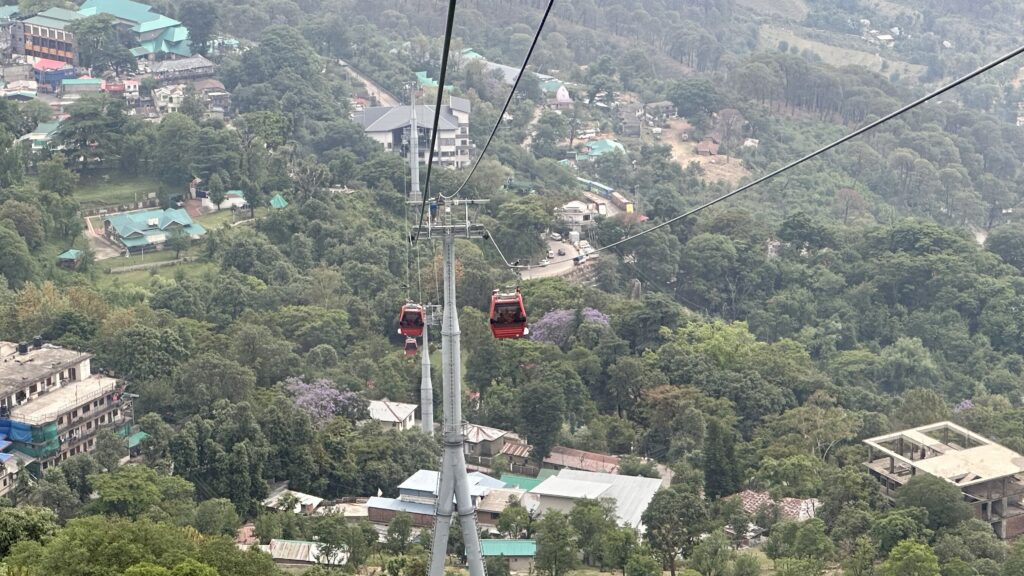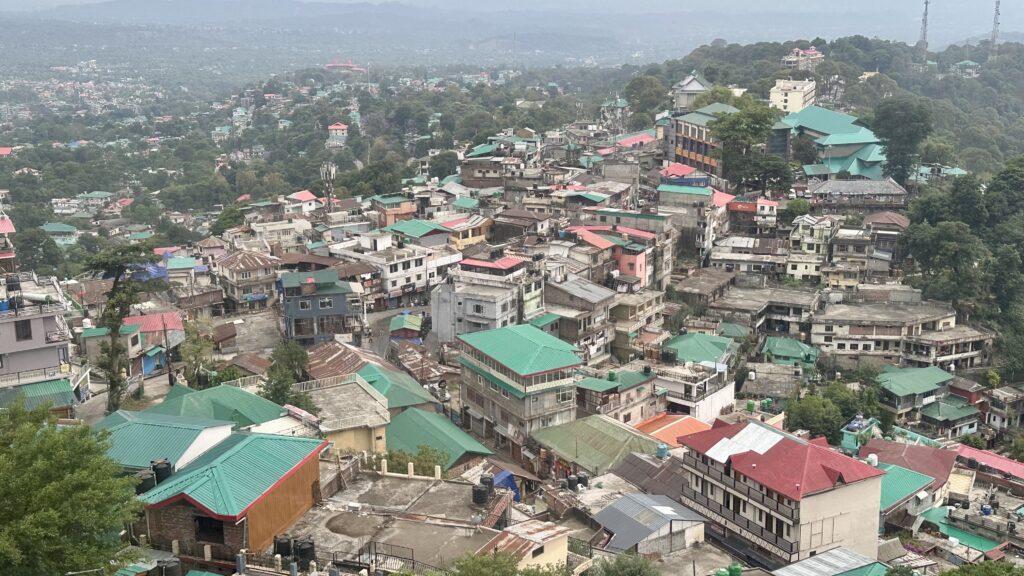3 nights in jüSTa Birding Resort & Spa
After visiting the Indian Institute of Advanced Studies in Shimla, we were on our way to Dharamshala which is 230 km north. We reached Dharamshala in the evening after 6 pm(after 7 hours) and checked into our hotel.
Hotel Justa Birding Resort & Spa – This 5-start hotel is situated at a high elevation with a stunning view of the surrounding Dhauladhar mountains. Our room had a private balcony from where we got a terrific view of the mountains. The only downside of staying in this hotel – the winding road leading up to the hotel was under construction and hence it was a bumpy ride for a couple of kms.
Since we reached Dharamshala after 6pm, we did not do much the rest of the day. We had a relaxed dinner in our hotel and went to sleep early.
- Day 1 – was a Sunday, our driver suggested that we visit the sites in Kangra first as Dharamshala would be crowded with out-of-town visitors. After visiting the sites in Kangra, we had some time to visit a couple of sites in Dharamshala that were close to our hotel.
- Day 2 – We visited sites in and around Mcleodganj, starting with St. John Church, followed by the Bhagsu Waterfalls. The driver then dropped us off near Dalai Lama temple. After visiting the temple, we wandered the streets of McLeodganj doing some window shopping. We then took the McLeodganj Ropeway to Dharamshala from where our driver was waiting to pick us up.
- *************** DAY 1 ***********************
- Dharamshala Cricket Stadium
- Kangra Fort
- Kangra Devi Temple
- Norbulingka Institute
- Lunch at Vinod’s Rasoi
- Dhauladhar Mountains
- Nechung Monastery
- *************** DAY 2 ***********************
- St. John in the Wilderness Church
- Bhagsunath Temple
- Bhagsu Waterfall
- Dalai Lama Temple
- McLeodganj
Dharamshala Cricket Stadium – On the way to Kangra fort, we stopped at a viewpoint that was just 1km from out hotel for a fantastic view of the famous and most beautiful Cricket Stadium in the world. The stadium is the home ground of Himachal Pradesh men’s and women’s cricket team and has hosted many international cricket matches. The picturesque venue is unique in India as it is situated at an altitude of 1,457m above sea level and has snow-capped Himalayan mountains in the background.
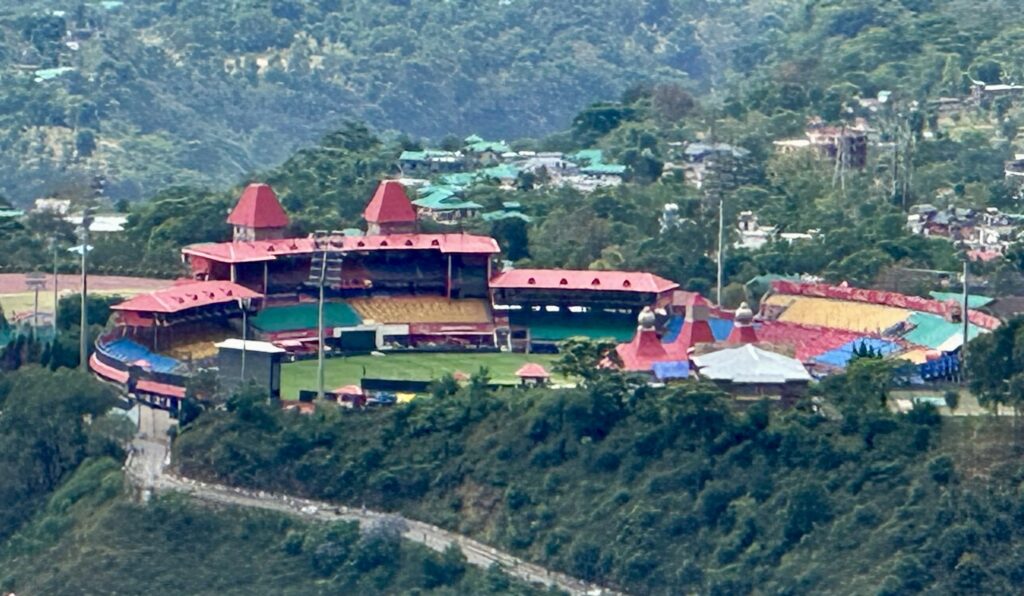
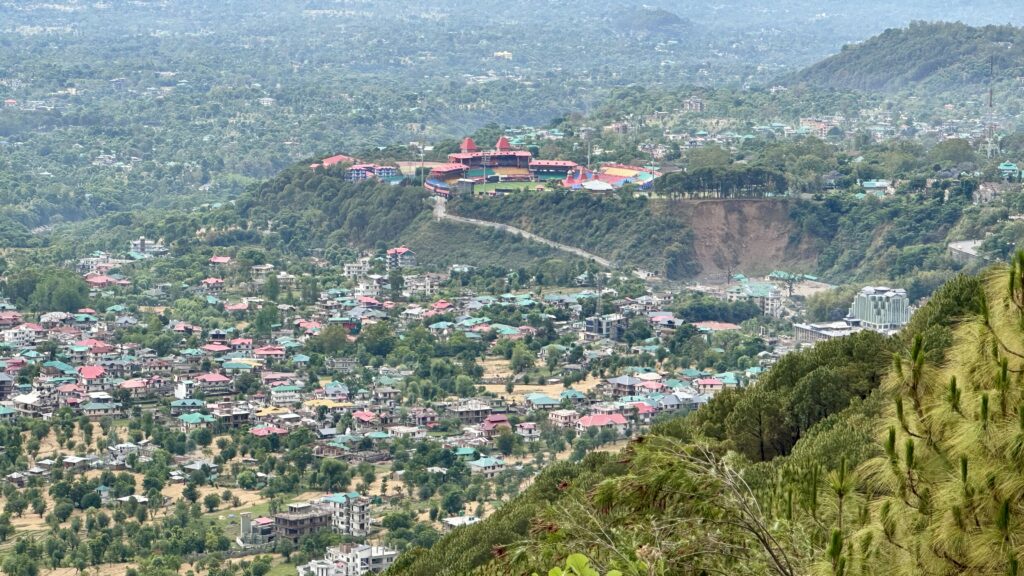
Kangra Fort – Kangra fort is 24km from our hotel and took close to an hour to reach. On the way we stopped to admire the Manjhi River meandering through the valleys of Dharamshala, serving as a lifeline for the region. It’s rocky riverbed is a natural feature that adds to its beauty.
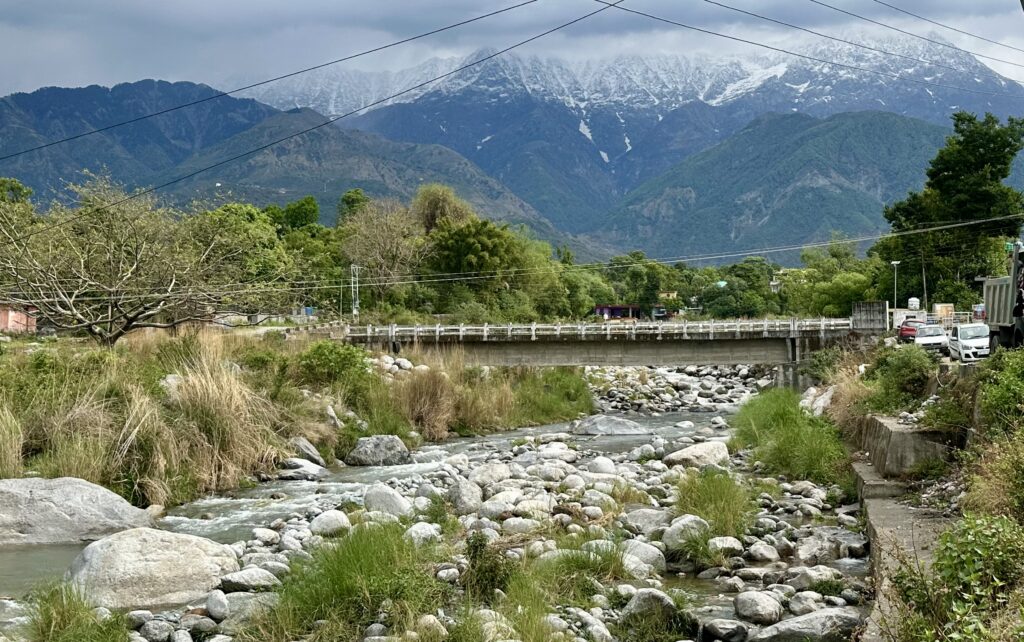
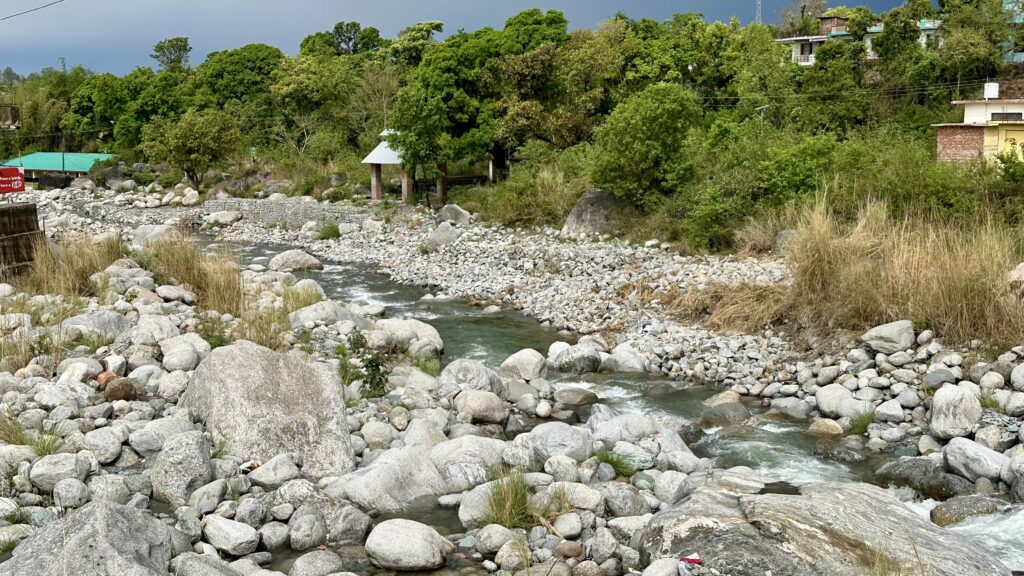
There was not much traffic in the morning at 9am and we were able to reach the fort in good time.
At the ticket counter we were asked to scan a QR code to purchase tickets online. No cash or credit card is acceptable. We had to ask the driver to help us buy the ticket as the QR code did not work well on our phone.
The earliest reference to this fort dates back to 1009AD. The lineage of the royal family of Katoch – the original owners of the Kangra fort – can be traced back to the period of Ramayana and Mahabharata. The fort was attacked over 50 times. And the structure, being so strong, survived all of this. It only collapsed partially during the earthquake of 1905.
Kangra Fort, Archaelogical Museum – We first stopped by the archaelogical museum within the fort premises which houses cultural artifacts from the ancient fort.
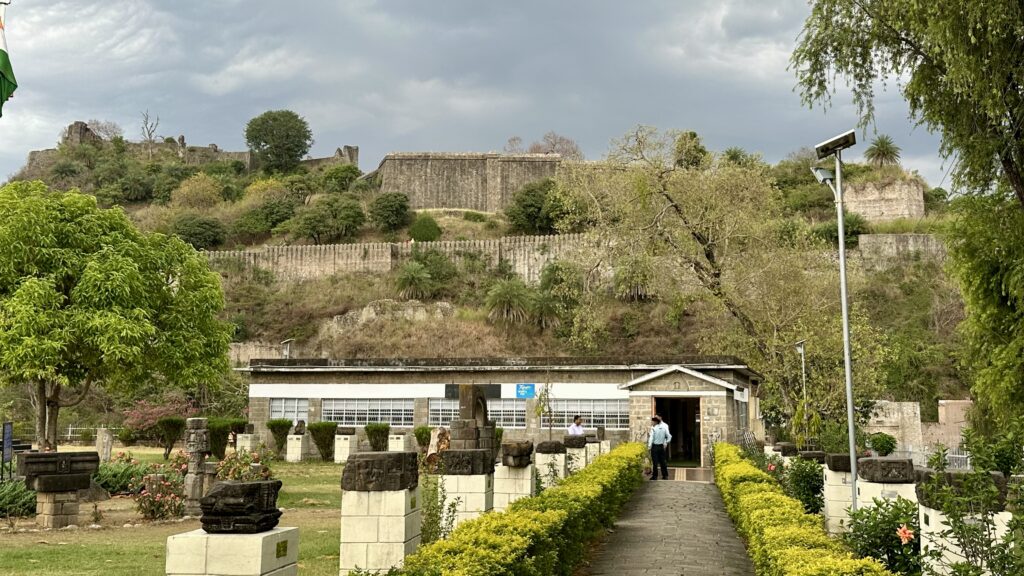
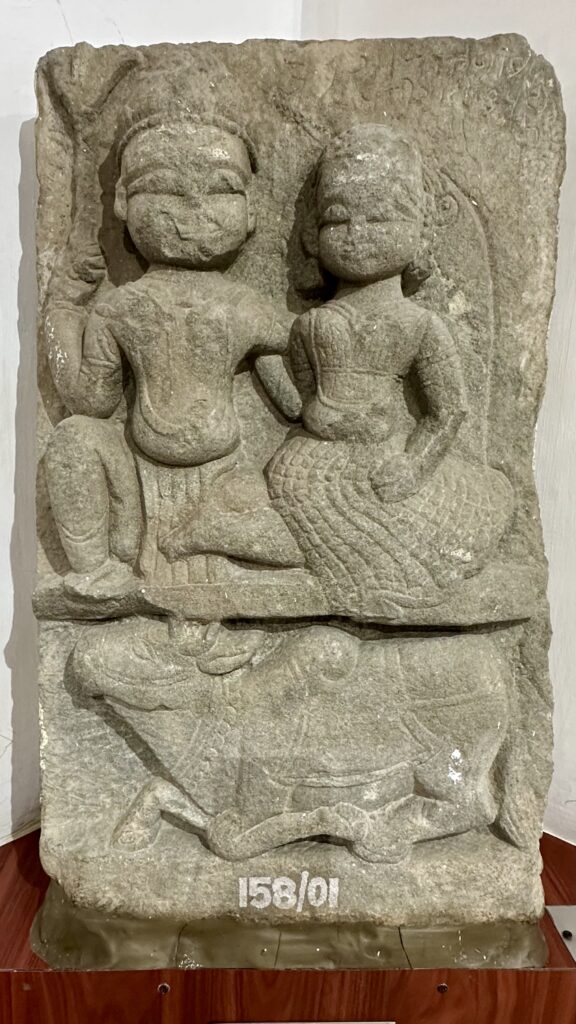
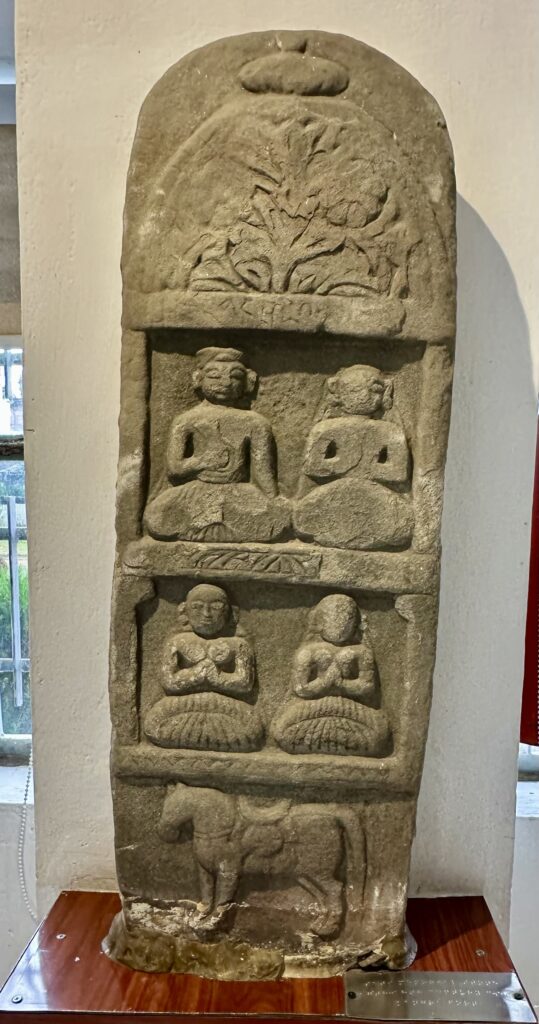
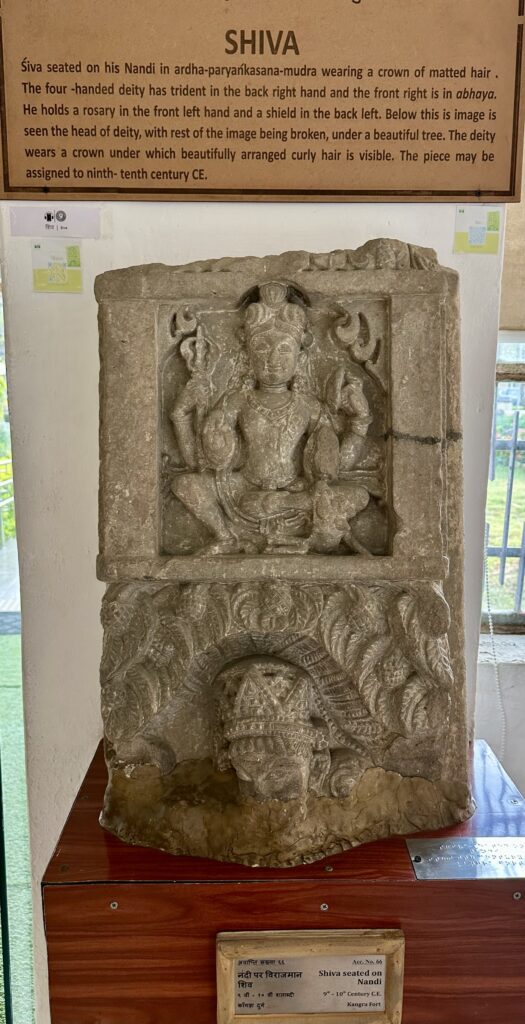
The current-day fort ruins lie along a partly-steep and long path inside the premises – be sure to bring along a bottle of water, a hat and comfy walking shoes. You may want to bring an umbrella if it is cloudy as it started drizzling when we visited, but stopped within 10 min.
Kangra Fort, Gates – The fort has several prominent gates with unique architectural features starting with the Ranjit Singh gate through which you enter.
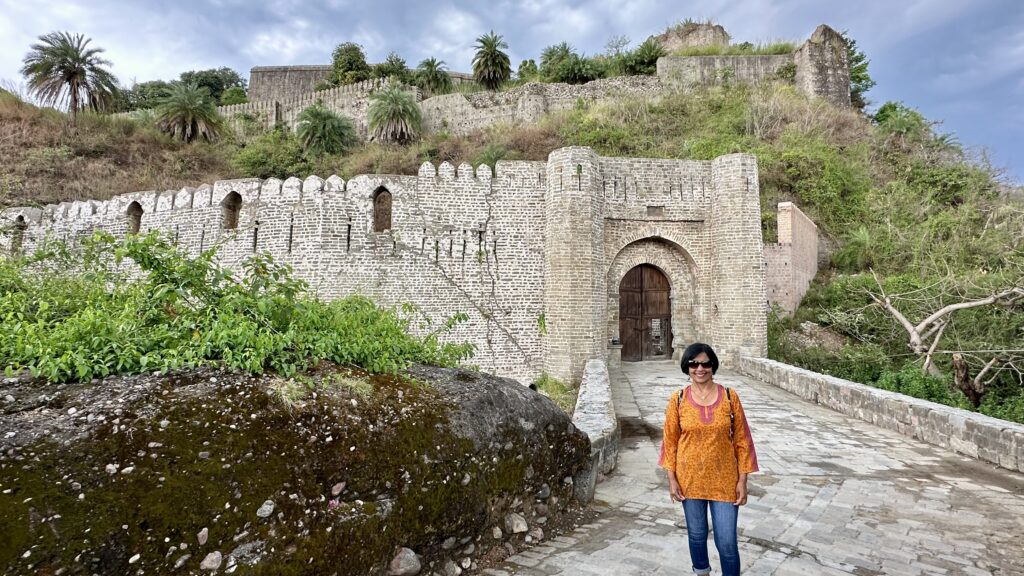
You will then climb a series of steps and pass through the following gates – Ahini, Amiri, and Jahangiri. The Jahangiri gate was built by Jahangir, the Mughal emperor, to commemorate the victory of Mughals on Kangra fort.
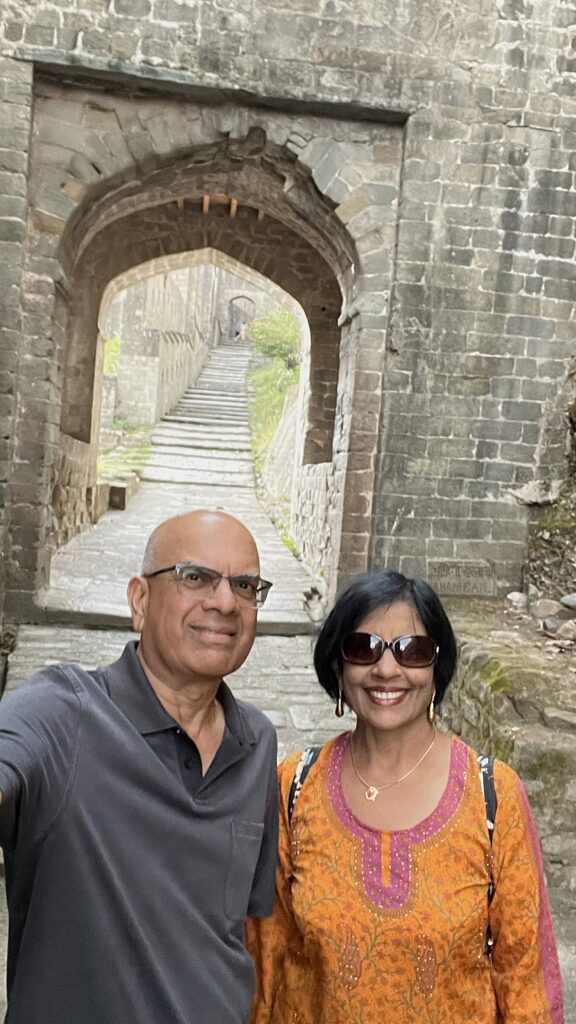
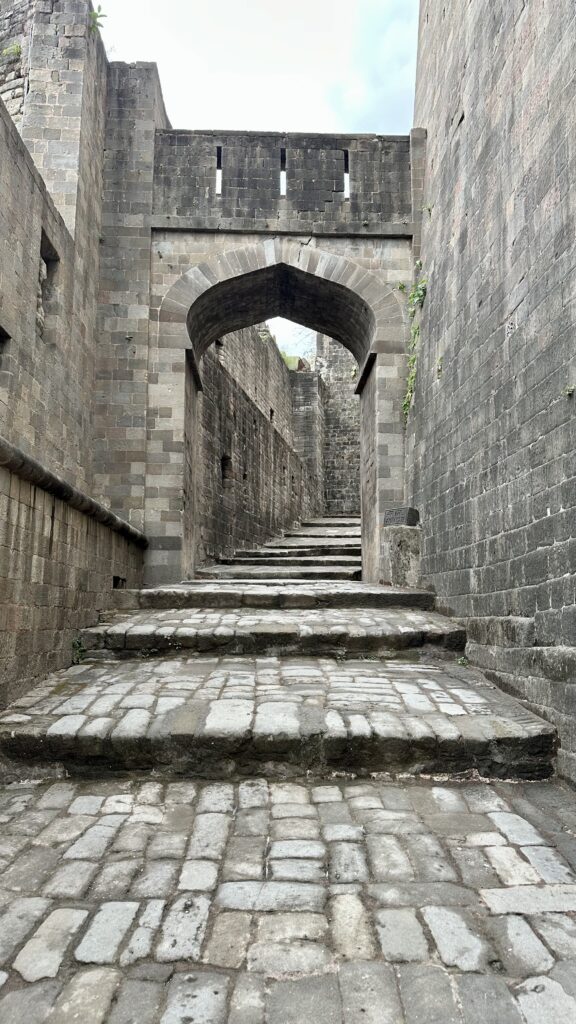
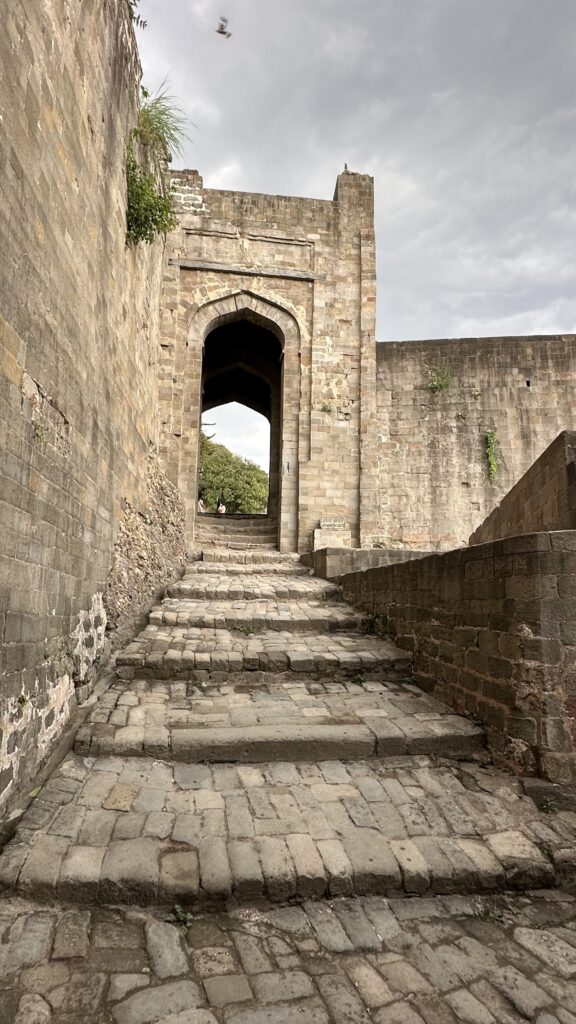
You will then pass through the Andheri gate which is one of the oldest gates of Kangra Fort. The passageway leading to it is narrow and is covered by tall walls on both sides such that sudden darkness fell upon on anyone trying to cross it. For the enemies, this was a moment of confusion, as they would wait for their eyes to get adjusted and by the time they realised what was upon them, it was too late.
The next gate named the Darshini Gate has statues of Goddess Ganga and Yamuna on either side and welcomes you into the large courtyard.
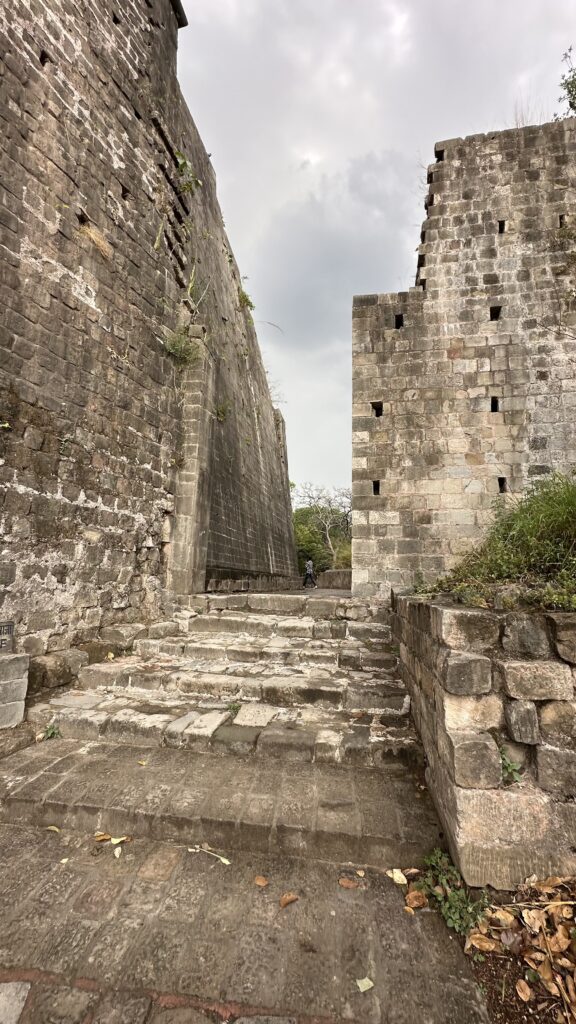
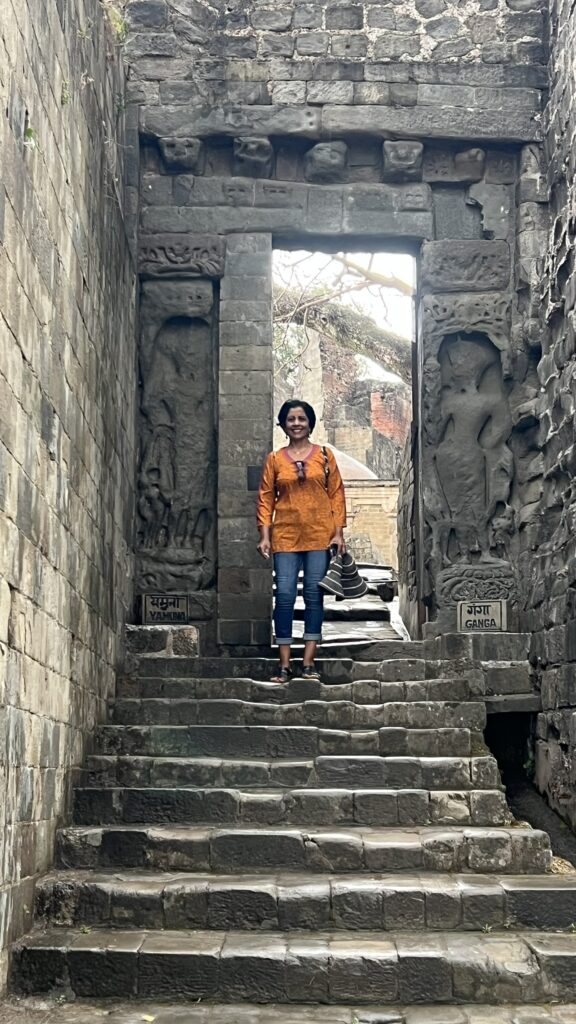
Kangra Fort, Temple ruins – After you pass through the Darshini gate, you will enter a large courtyard with ruins of temples and residential area. The temple ruins belong to Ambika mata temple, Laxmi Narayan temple and a Jain temple.
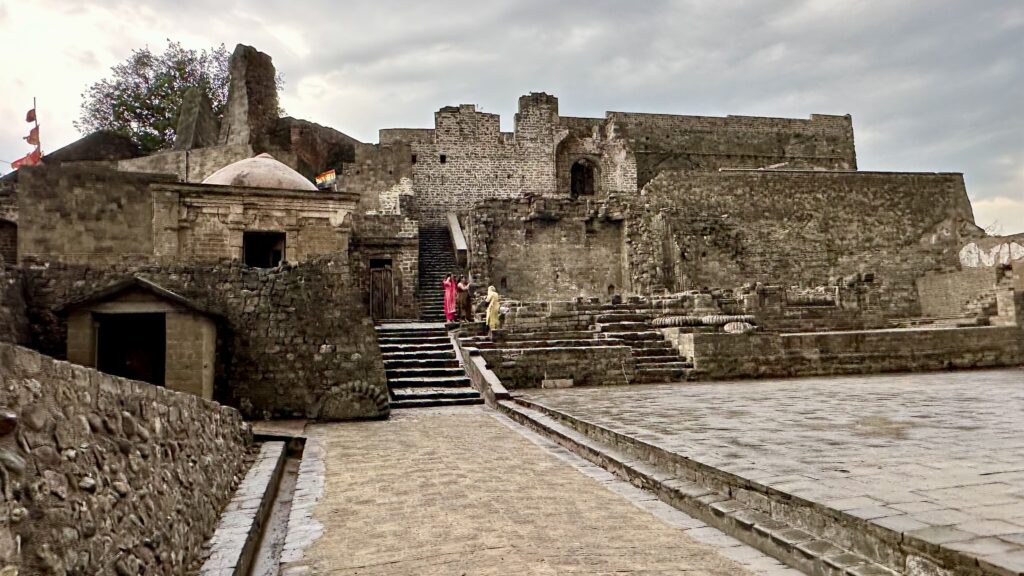
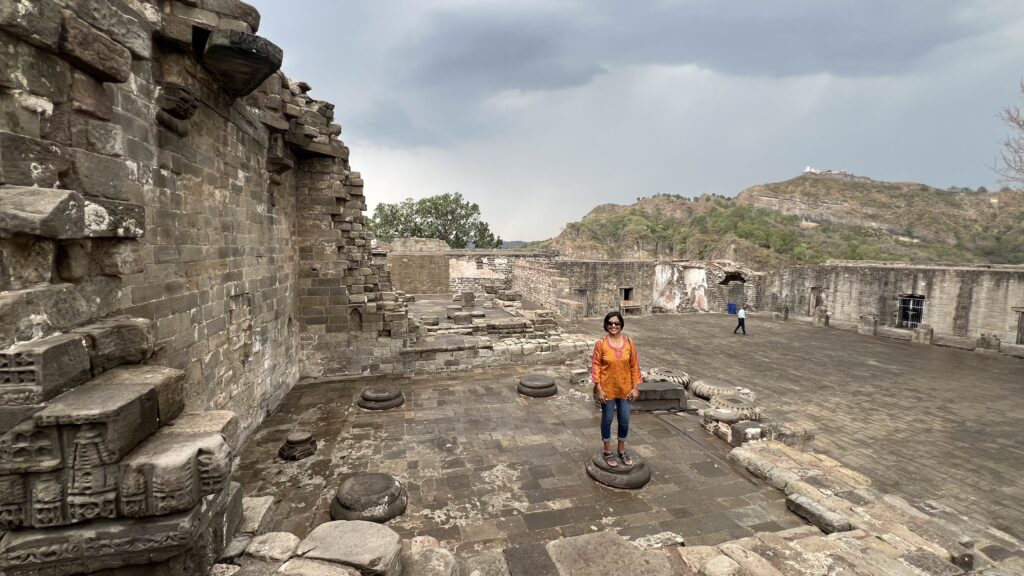
After you cross the courtyard and walk behind the lone surviving wall of the Laxmi Narayan temple, you will notice the entire wall is intricately carved and looks stunning.
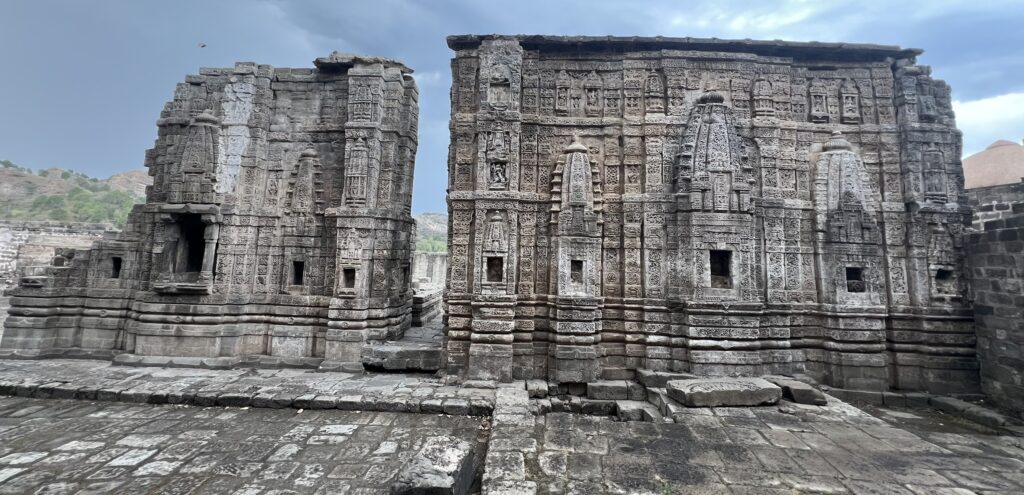
Although the Ambika mata temple, Laxmi Narayan temple and the Jain temple do not exist anymore, the courtyard has a small temple just next to the stairs that is still in use.
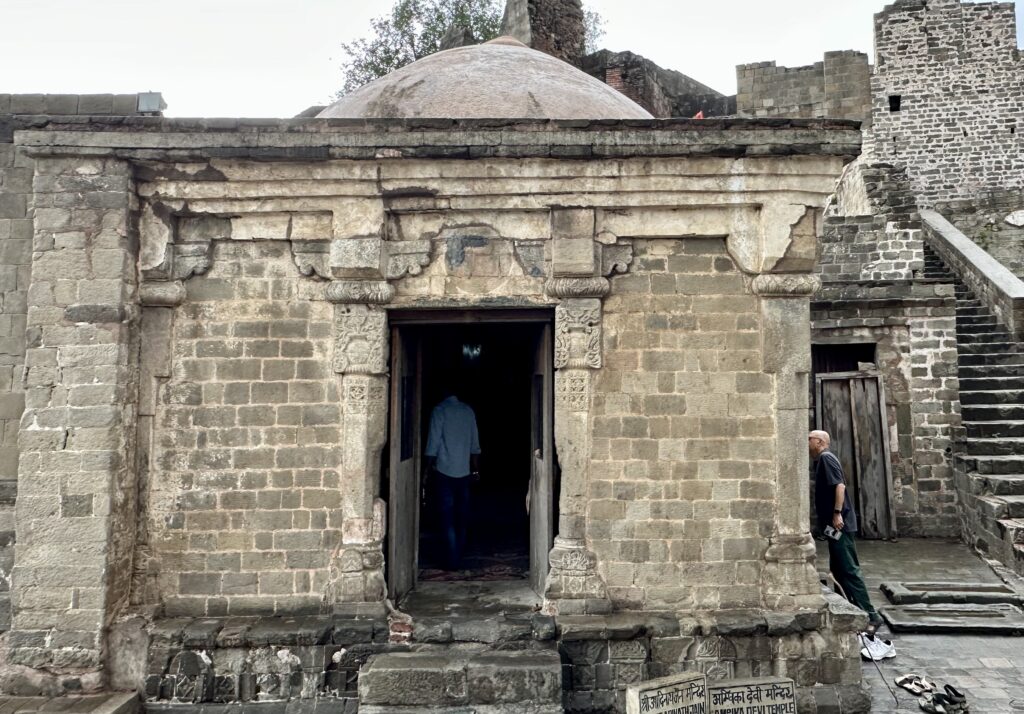
Kangra Fort, Palace ruins – Crossing the courtyard, a flight of steps goes up to what would have been the palace once upon a time. You will first pass through the Mahlon ka Darwaza (Palace Gate). Before you pass through the entrance and into the courtyard at the top, there are a few corridors that lead to chambers and various courtroom areas of the Palace.
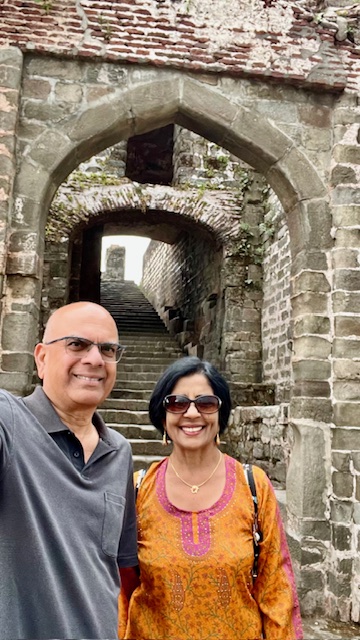
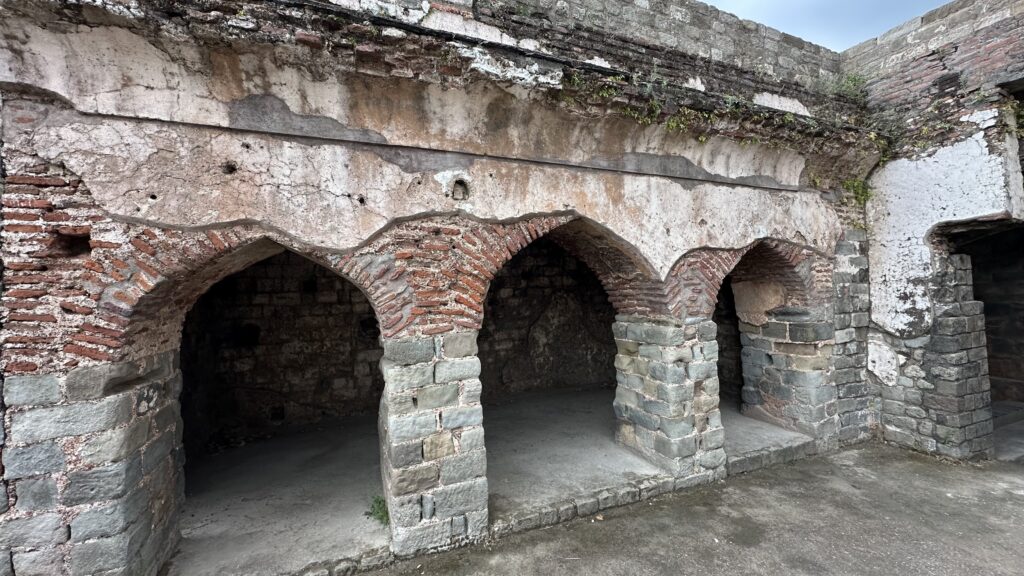
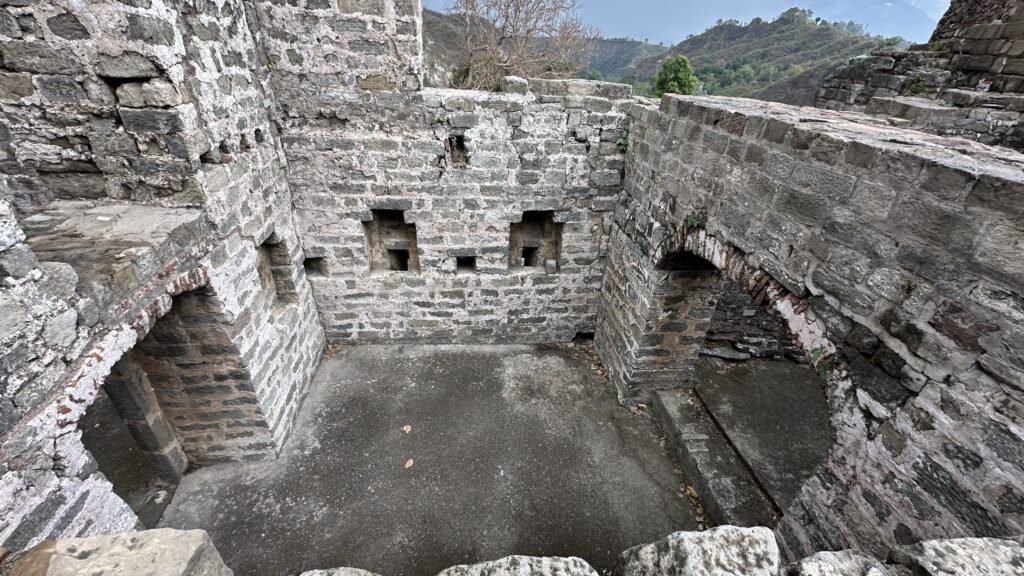
After passing through the Palace Gate, you will be in a huge open area which was once the palace courtyard. This is the topmost point of the fort from where you can get a magnificently sweeping view of the entire valley.
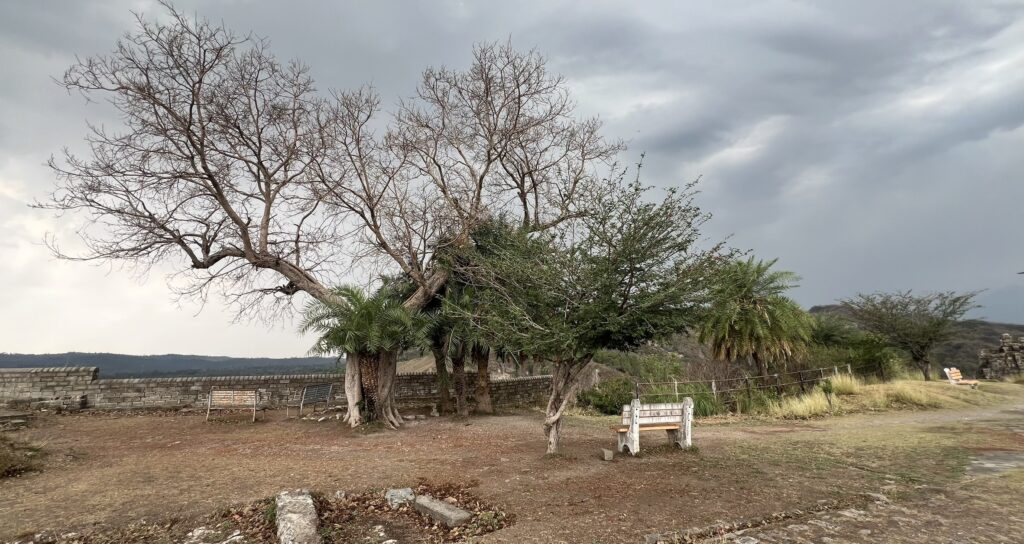
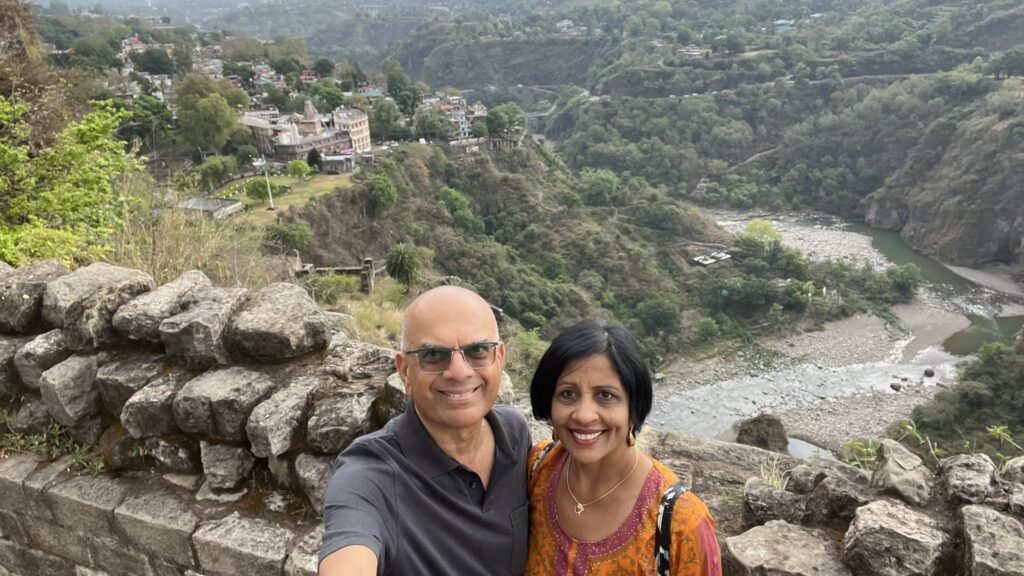
Kangra Devi Temple – This temple was within 3 km of the Kangra fort and is dedicated to goddess Vajreshvari, a form of goddess Durga. The original temple is said to have been built by the Pandavas at the time of Mahabharatha(3102 BCE). In 1905 the temple was destroyed by a powerful earthquake and was subsequently rebuilt by the government.
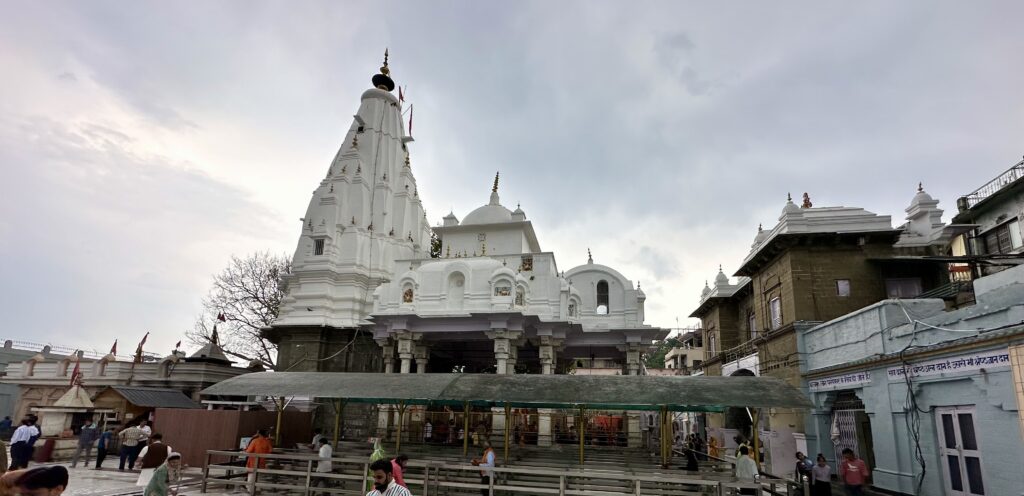
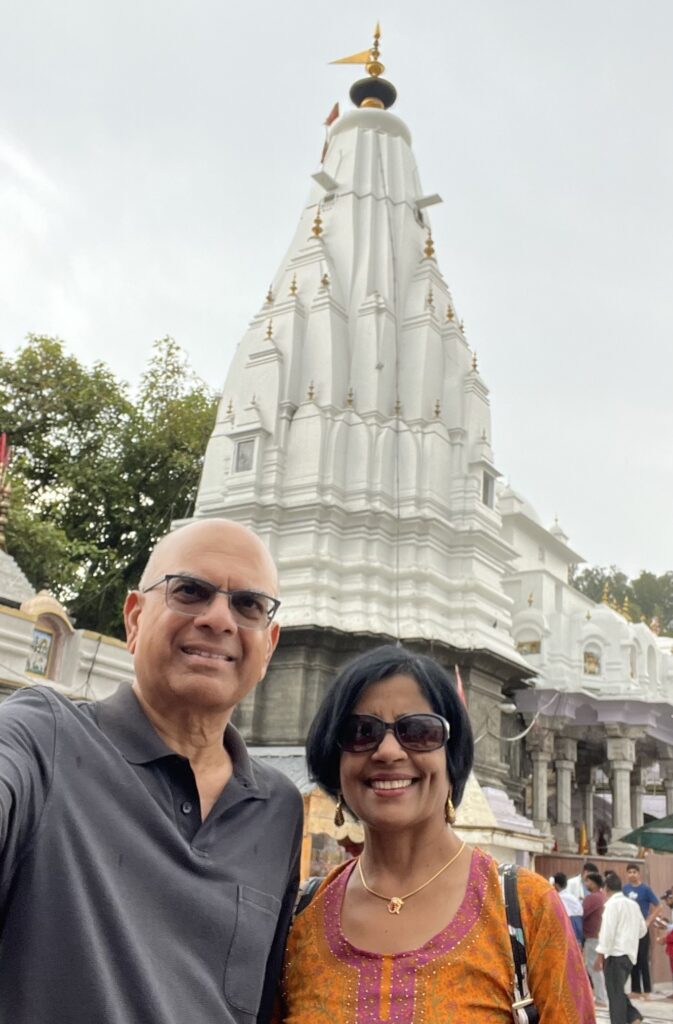
Norbulingka Institute – Named after the summer residence of The Dalai Lama at Lhasa, the Norbulingka Institute is a popular learning centre that is located in Dharamshala. Built in a traditional Tibetan Style, it is set in a beautiful garden of meandering paths, flowing streams, small waterfalls and ponds.
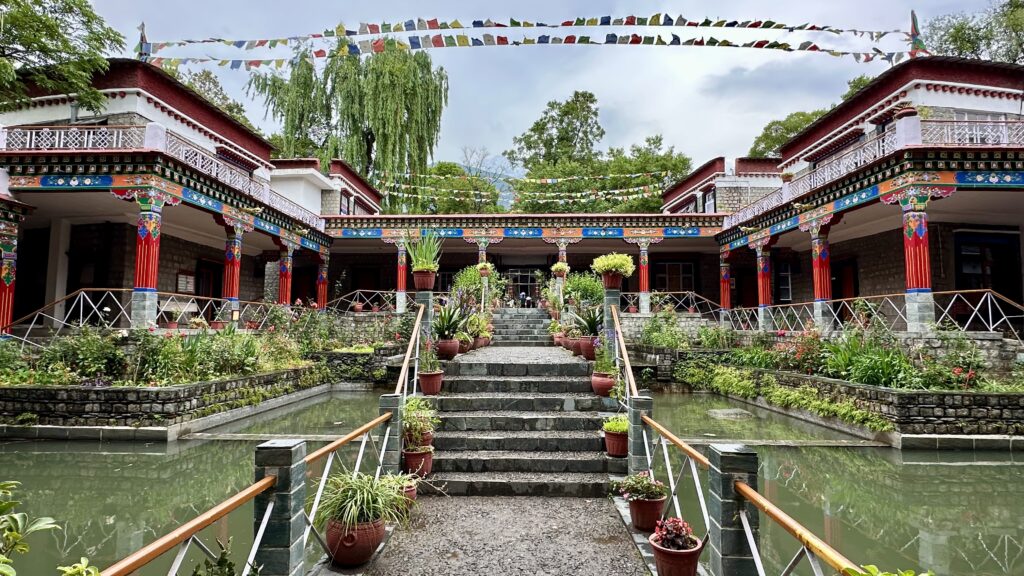
Norbulingka Institute, Temple – The temple of Norbulingka, popularly known as Deken Tsuklagkhang, is an example of the Tibetan religious architecture and displays some of the finest work by Norbulingka artists and a perfect place for prayer and meditation. The walls of the temple are adorned with thangka frescos which depict the deeds of Lord Buddha, the fourteen Dalai Lama and other great Buddhist masters. The centerpiece of the temple is 14 feet gilded statue of Lord Buddha, which is the largest of its kind, lovingly crafted by the Norbulingka artists from hand-hammered copper sheets.
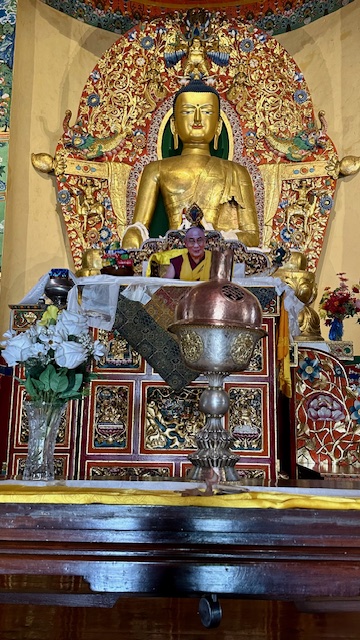
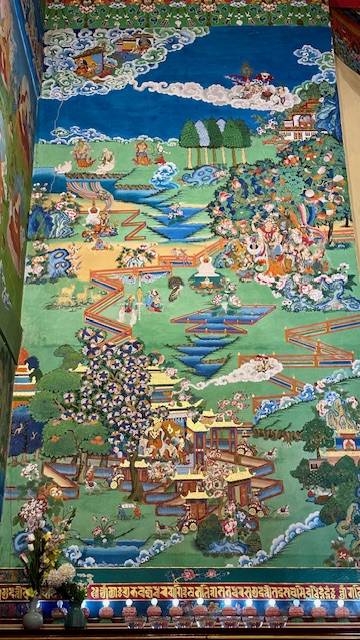
Norbulingka Institute, Losel Doll Museum – The Losel Doll Museum has a collection of 150 dolls who are dressed in traditional costumes from various regions in Tibet. The dolls in the museum were created by a group of artist monks as a project to support the monastery. The costumes are made of the finest materials which depict the richness and diversity of life on the Tibetan Plateau.
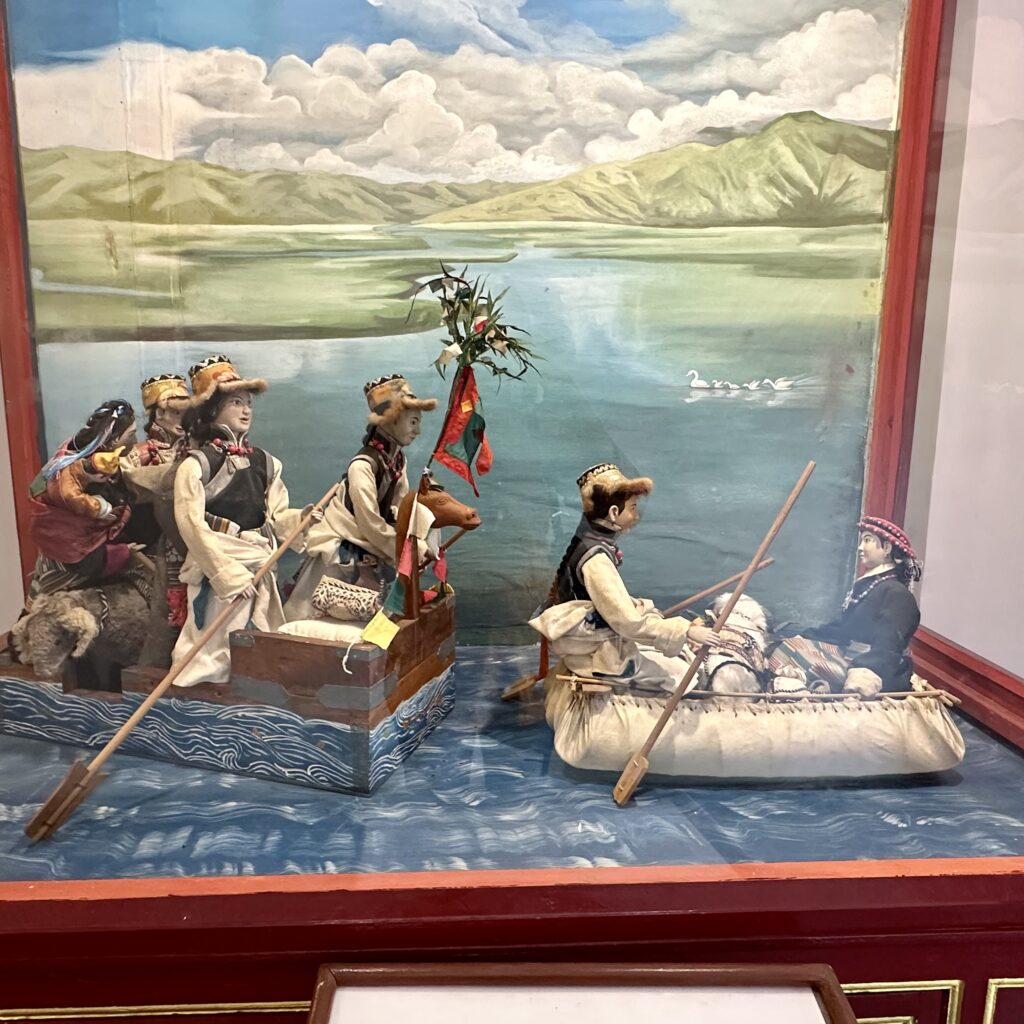
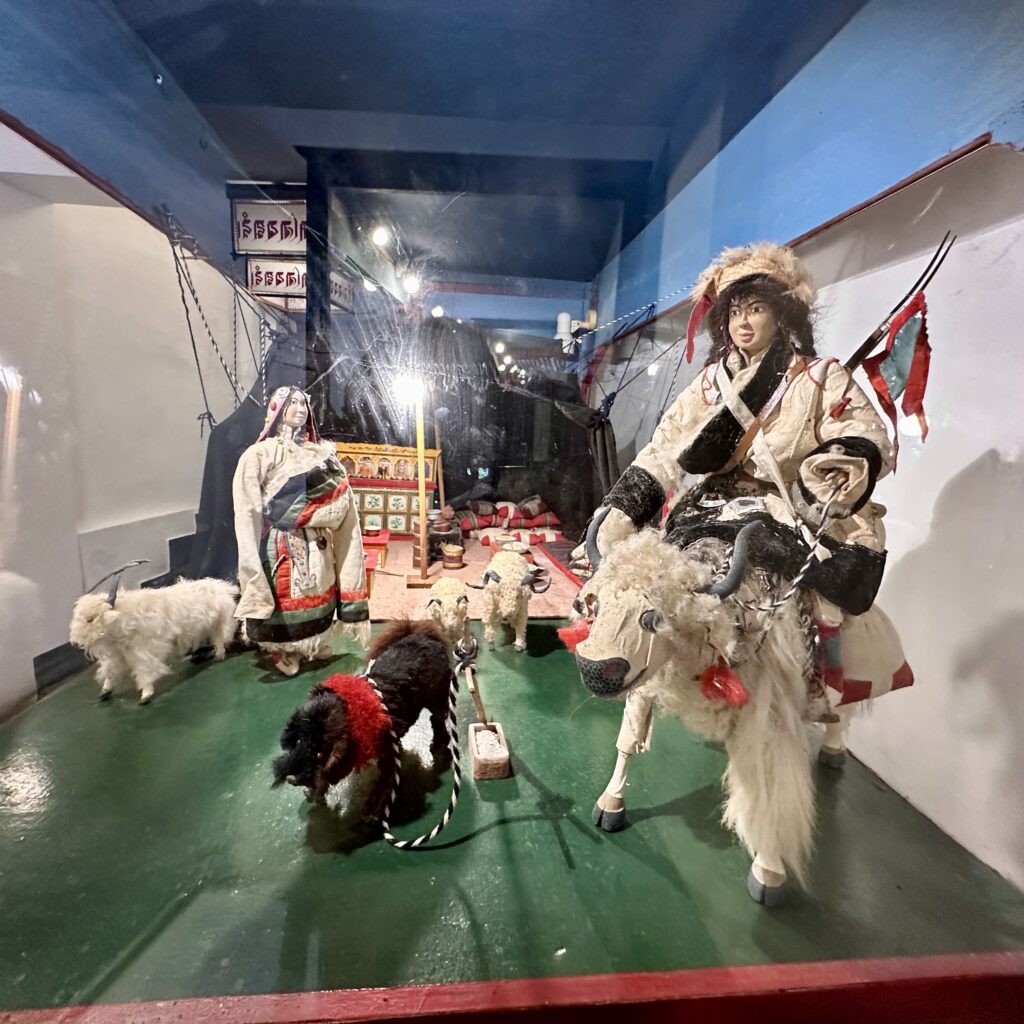
Norbulingka Institute, Shop – The complex has a shop selling beautiful Thangka frescos, Tibetan garments, bronze statues of Buddha, and furniture.
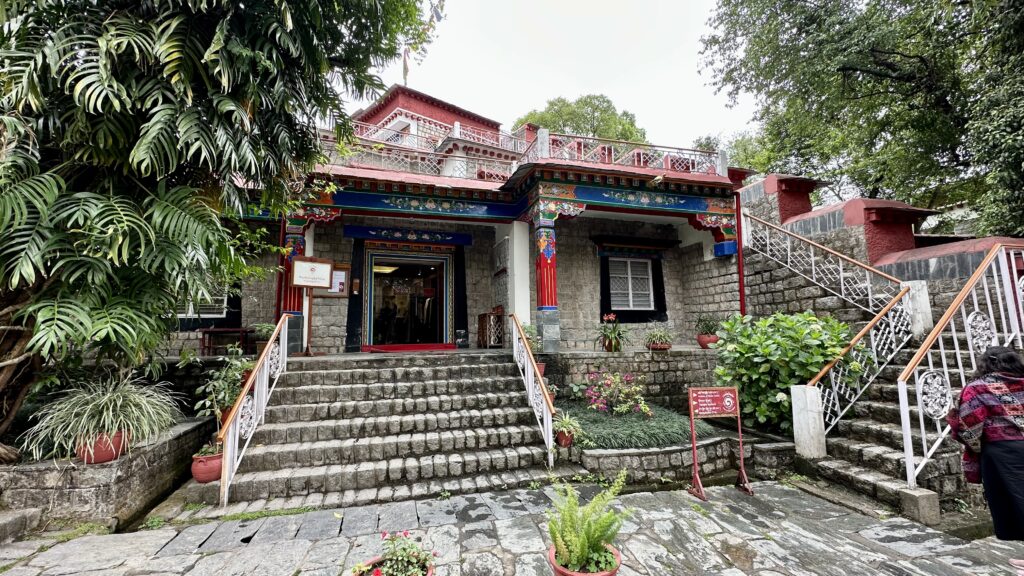
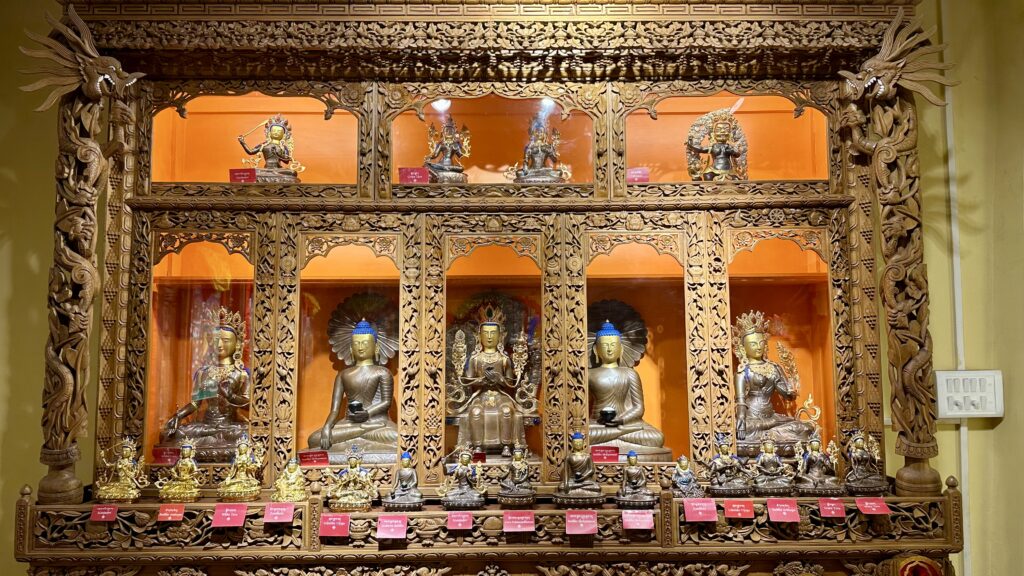
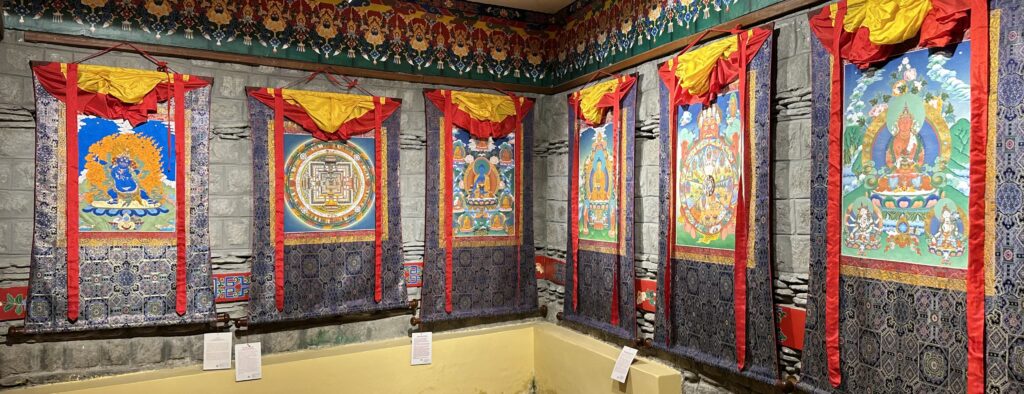
Vinod’s Rasoi, Kangra Dham – We stopped by for lunch at Vinod’s Rasoi which was highly recommended by locals. We also wanted a taste of traditional and popular dish of Himachal Pradesh – Kangra Dham. It is an elaborate meal served with rice, and about 5-6 varieties of lentils. After this heavy meal, we were ready for a nap.

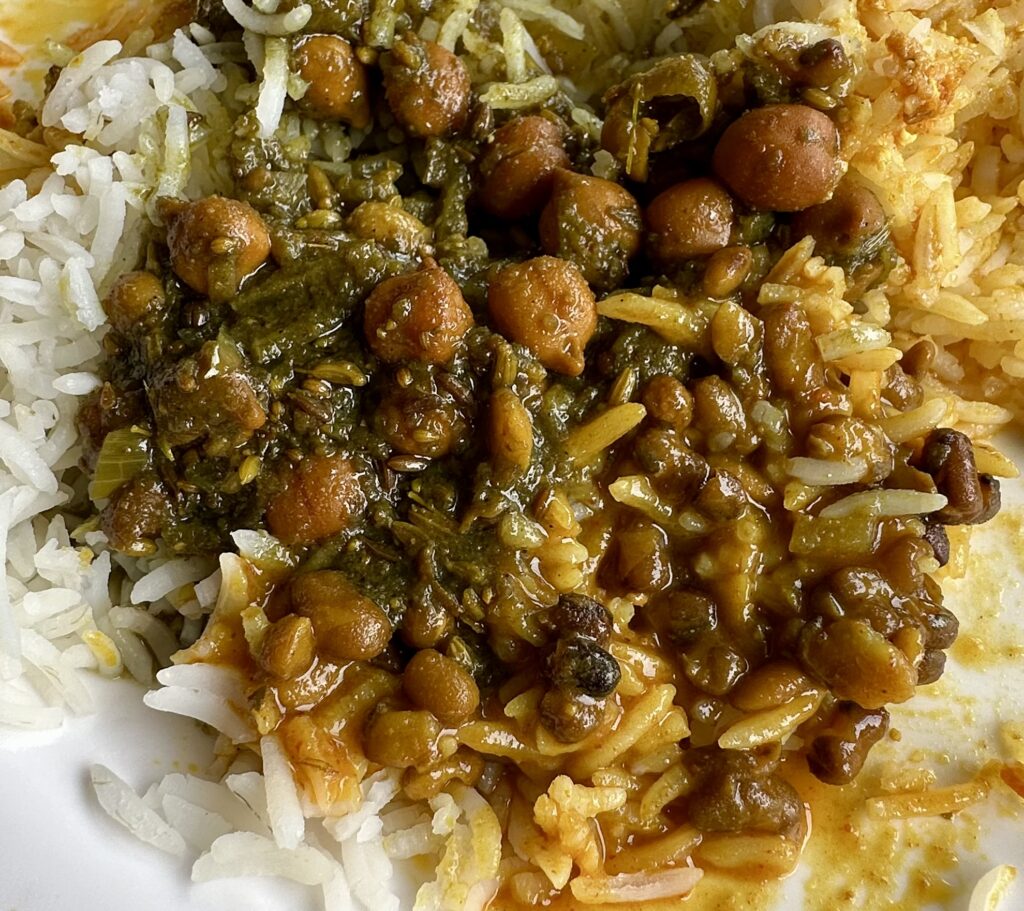
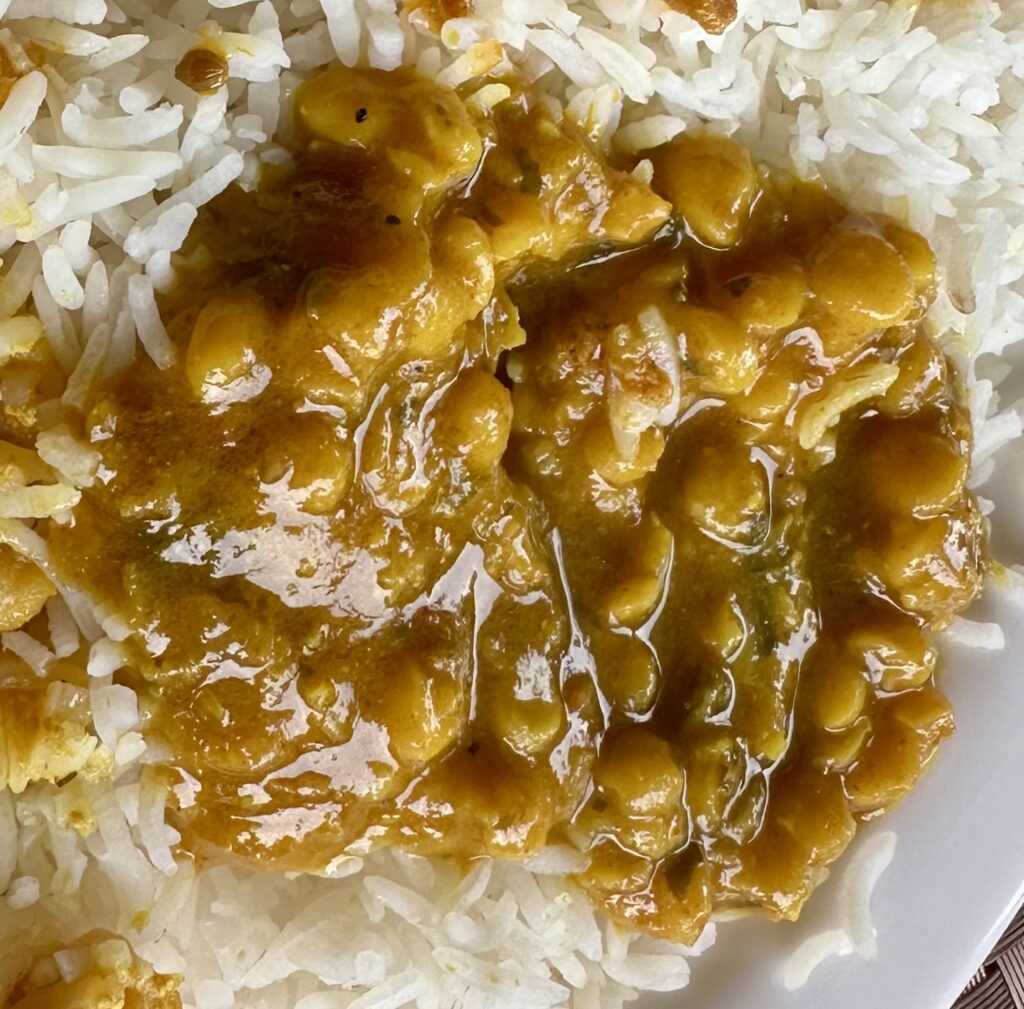
Dhauladhar Mountains – These mountains can be seen from many places in and around Dharamshala. We got a terrific view of these mountains from Vinod’s Rasoi as well as our hotel rooms’ private balcony. The Dhauladhar Range, also known as “The White Range,” is a middle Himalayan range that extends from the Beas River to the Chenab River. Dharamshala, is located on the southern spur of this range. The elevation of the Dhauladhar ranges widely from 3,500m to nearly 6,000m and is approximately 210 kilometers long.
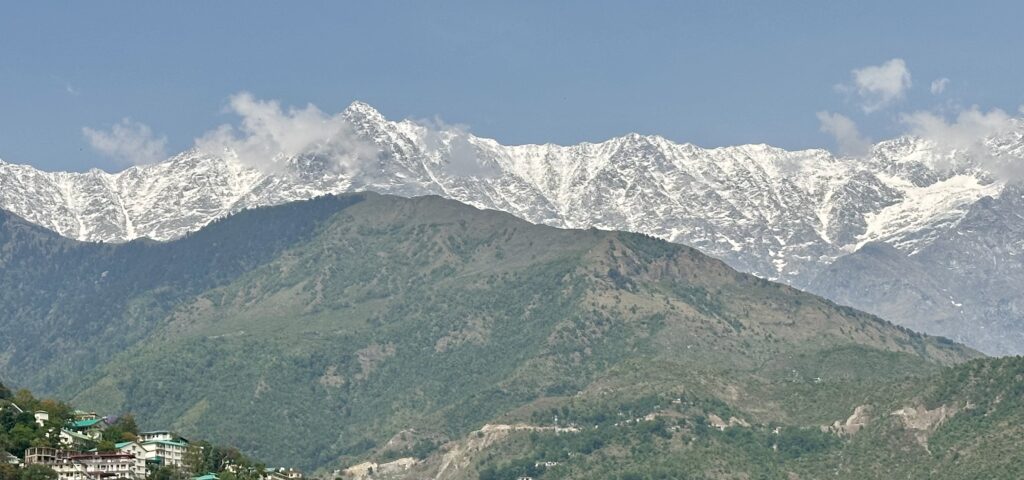
Nechung Monastery – Part of the Tsuglagkhang Complex, Nechung Monastery is of extreme importance in Tibetan and Buddhist culture. The state oracle of Tibet and a prominent figure in Tibetan Buddhism, the Nechung Oracle, is housed in this monastery. The monastery was relocated from its original location in Tibet to Dharamsala after the Chinese invasion. This monastery plays a crucial role by carrying out rites and rituals of the Tibetan population living there. This place has been a residence of the Dalai Lama since 1959.
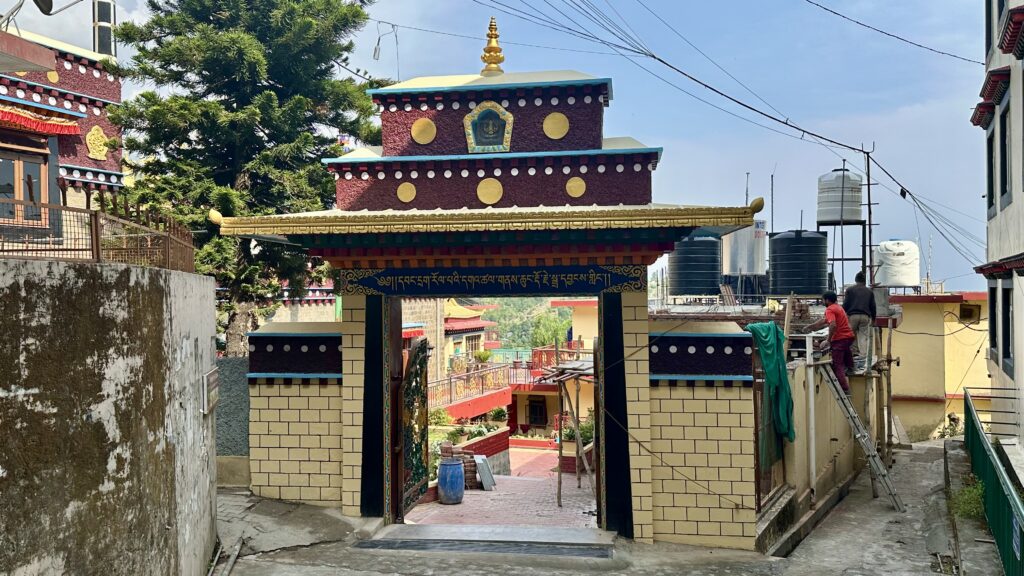
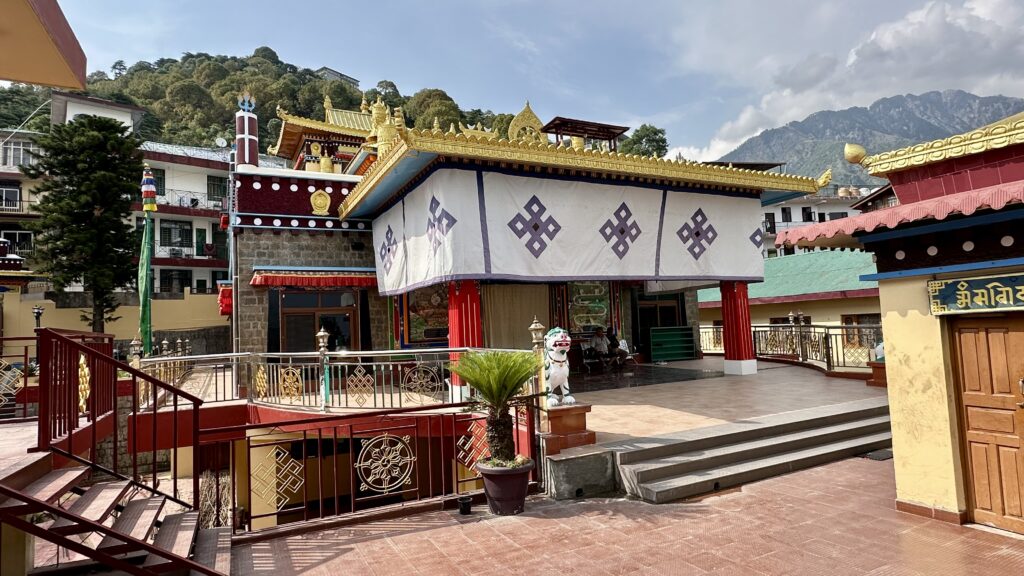
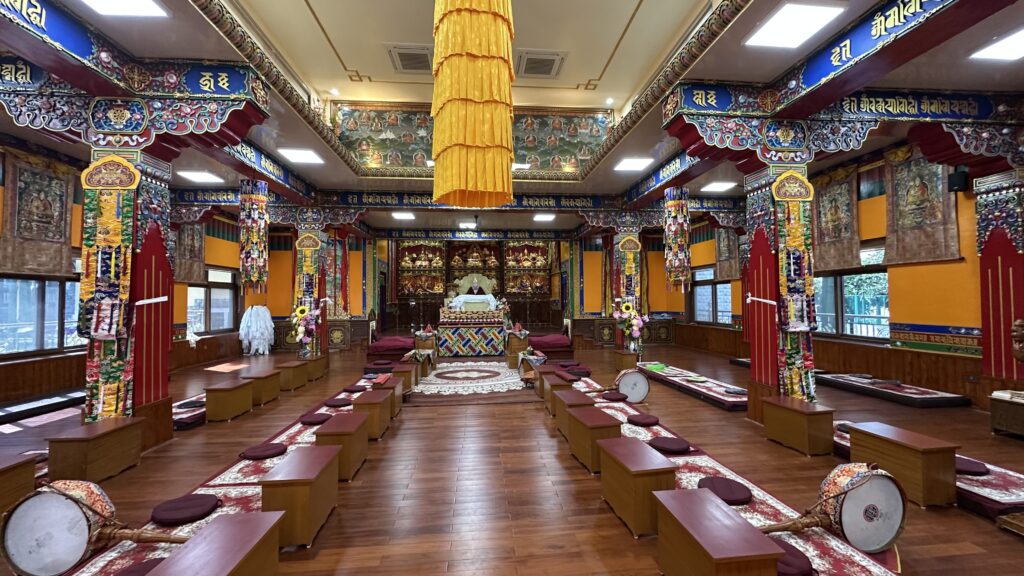
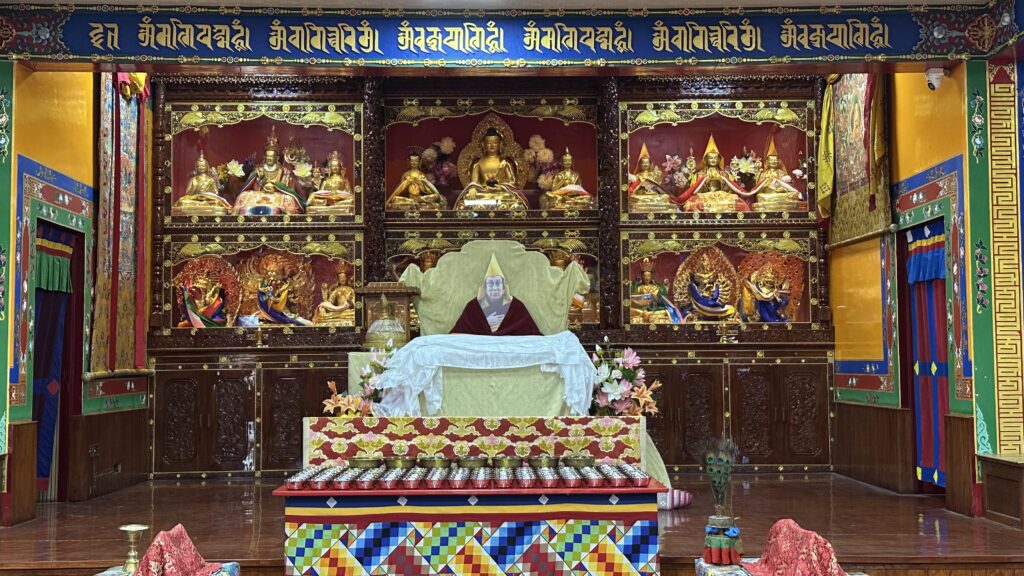
St. John in the Wilderness – built in 1852, it is one of the oldest cathedrals in North India. It is known for its unique gothic character, stained glass windows, and memorial of Lord Elgin, the British Viceroy who died here in 1863. On the day we visited the church, it was closed and hence could not see the interior.
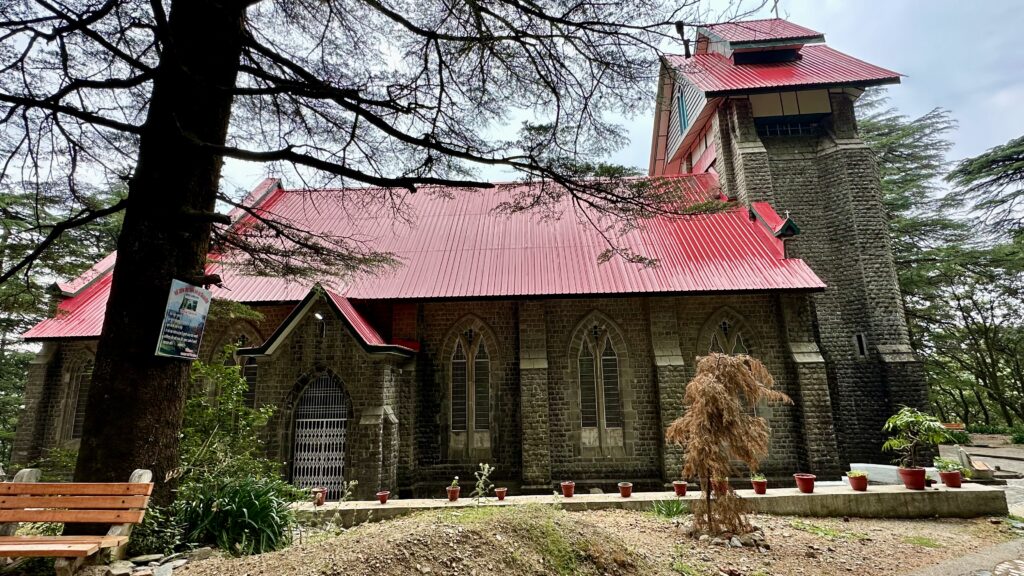
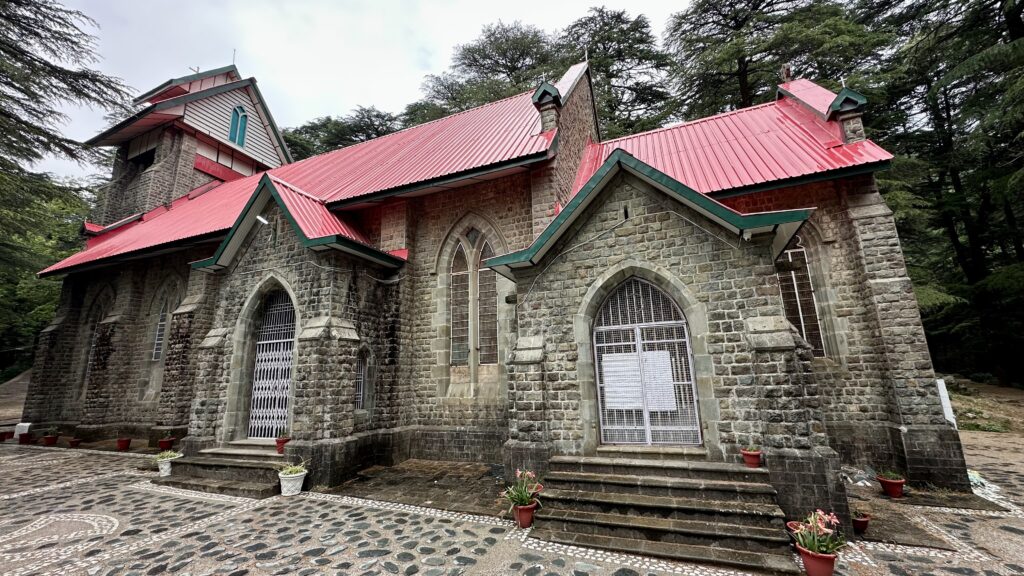
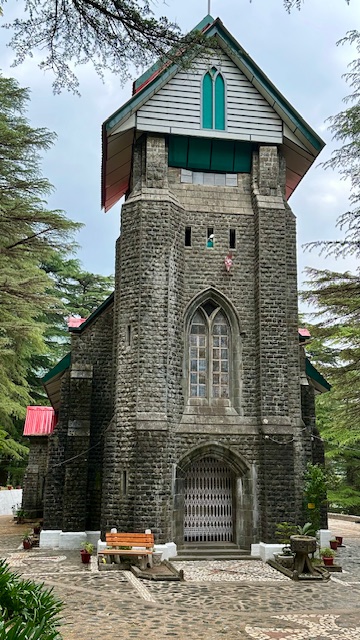
Bhagsunath Temple – A medieval Shiva Temple located about 3kms from Mcleodganj. The temple is highly revered by the Hindus and the Gorkha Community. The sacred shrine is famed for its two pools that are believed to have healing properties.
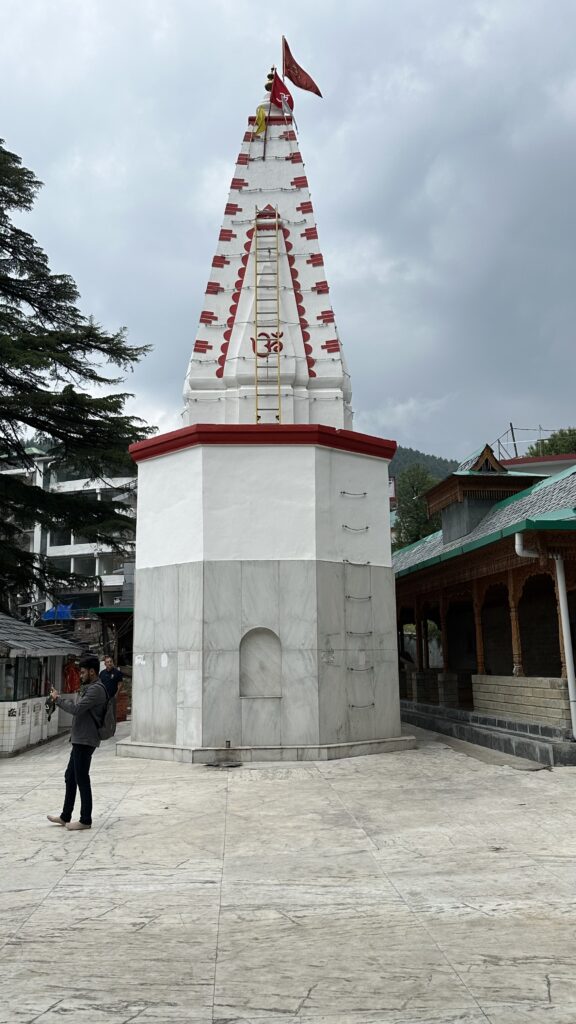
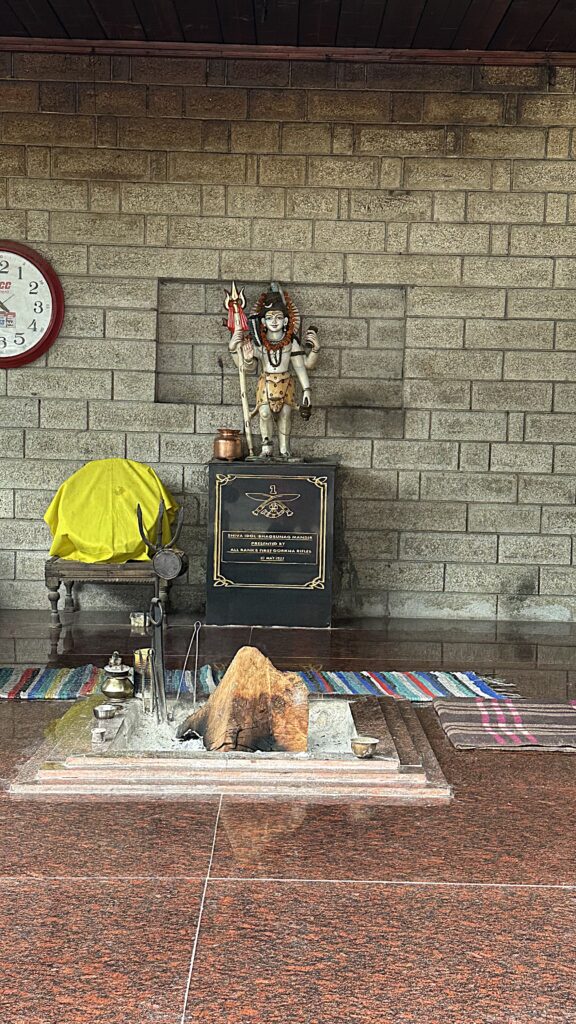
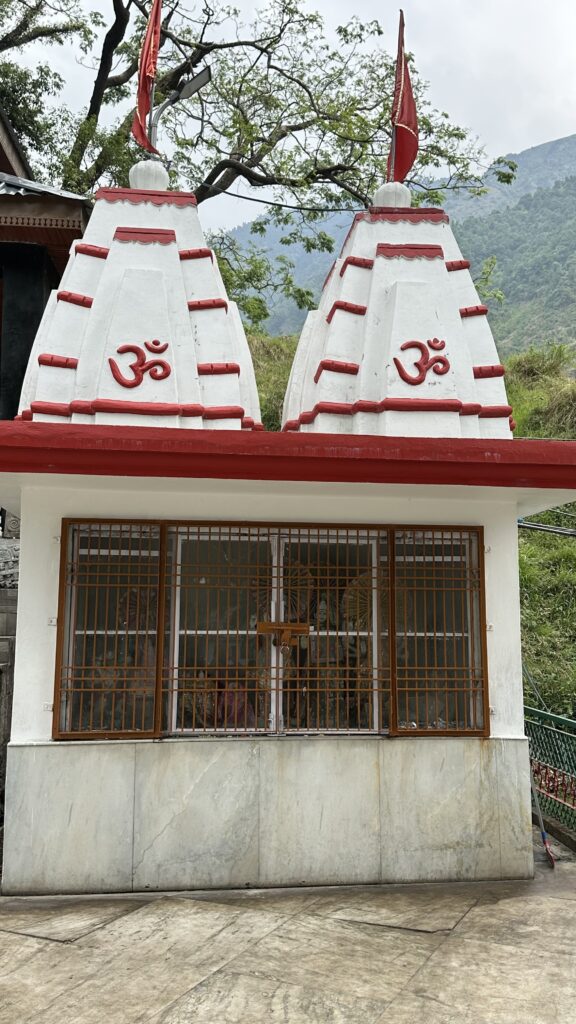
Bhagsu Waterfall – The trek to this waterfalls starts at the famous Bhagsunath Temple. It is about 2.5 km to the falls on a fairly well maintained and scenic path. The waterfall starts at the base of the Dhauladhar Valley, before cascading down, the stream also passes through the famous Bhagsunath Temple. The Bhagsu Fall reaches the peak of its glory and majesty during the monsoon season when the water falls from a height of around 30 feet and looks captivating and breathtakingly beautiful.
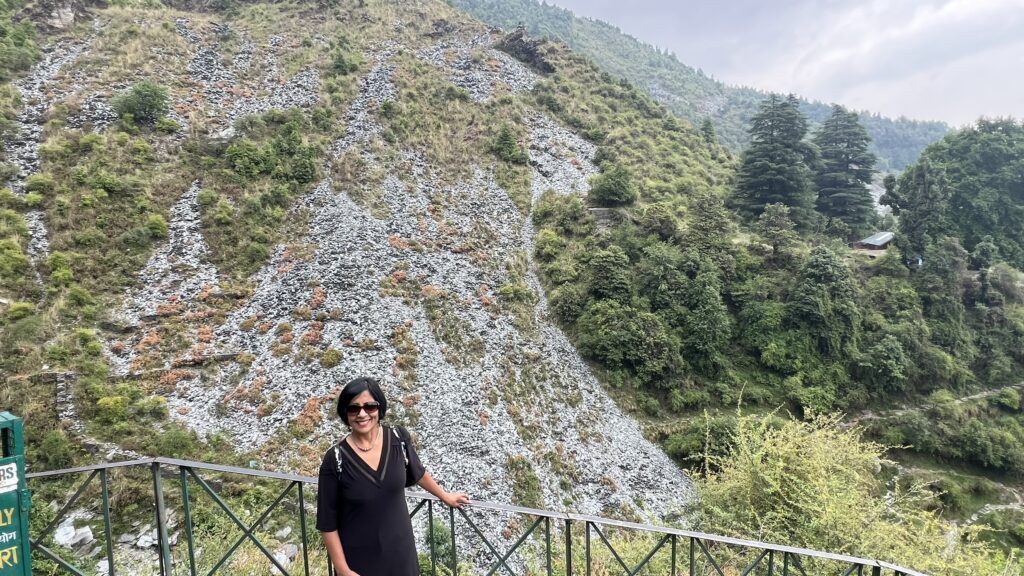
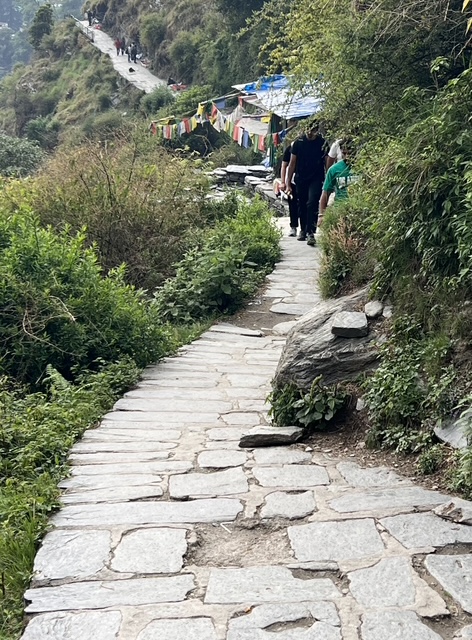
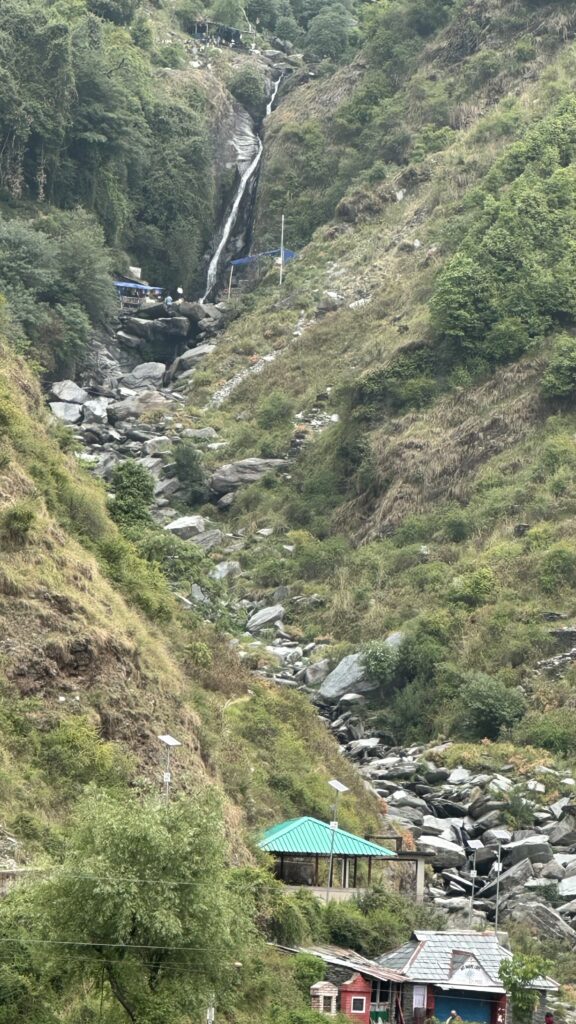
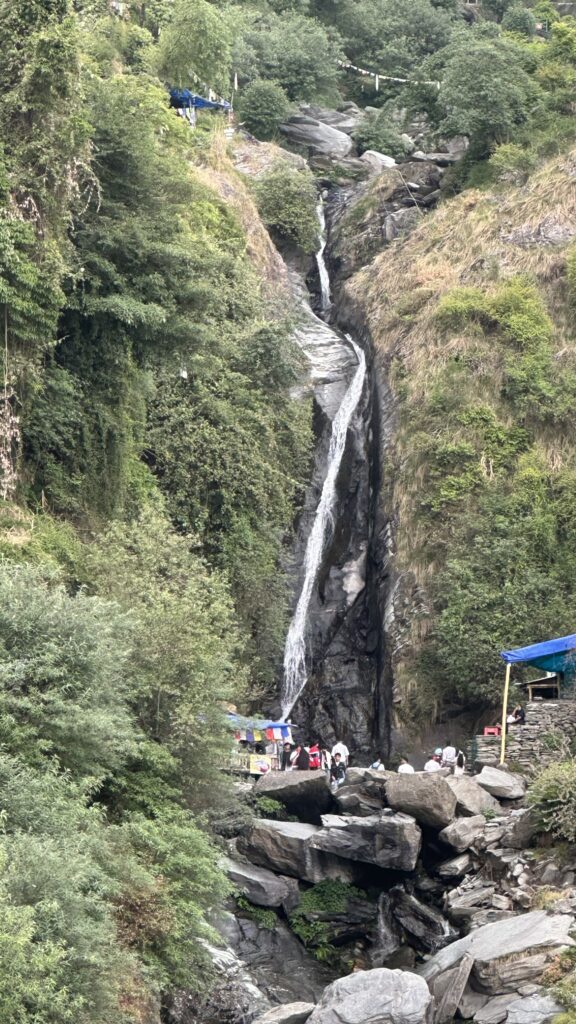
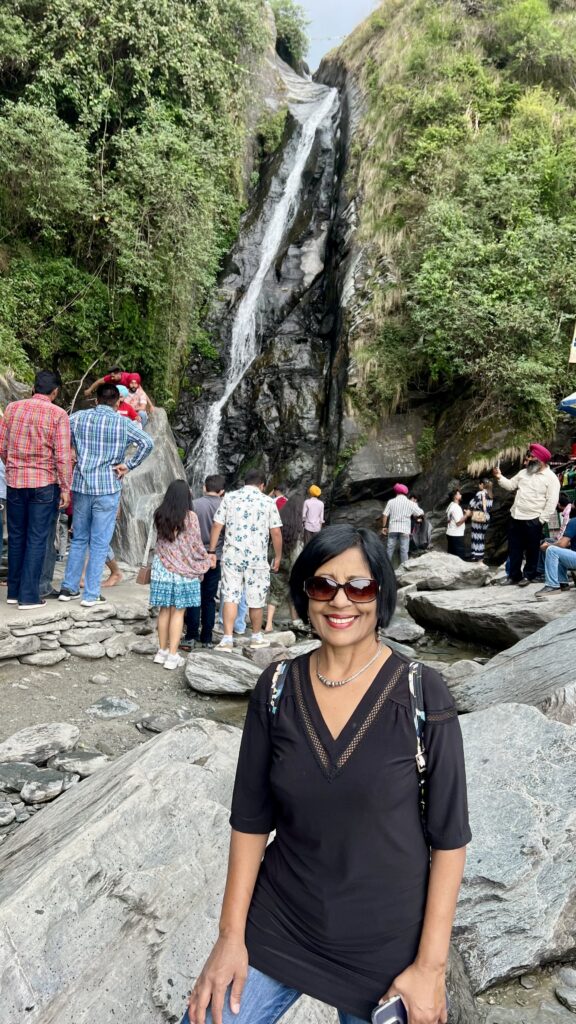
Dalai Lama Temple – The driver then dropped us off in front of Dalai Lama temple. Replete with Tibetan culture, the Dalai Lama Temple, also known as Tsuglakhang Temple, is a politico-religious centre in Dharamsala. The outside of the temple has a very simple appearance. The main shrine houses a magnificent gilded statue of Lord Buddha, surrounded by intricate murals depicting scenes from his life and teachings. The air is filled with the soothing chants of Buddhist monks engaged in prayer and meditation, creating an atmosphere of spiritual rejuvenation.
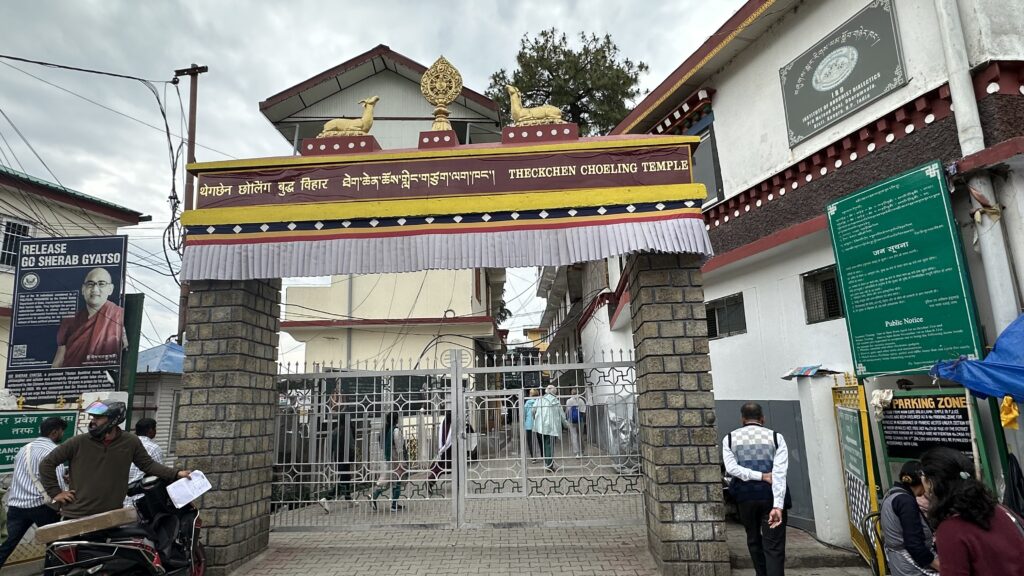
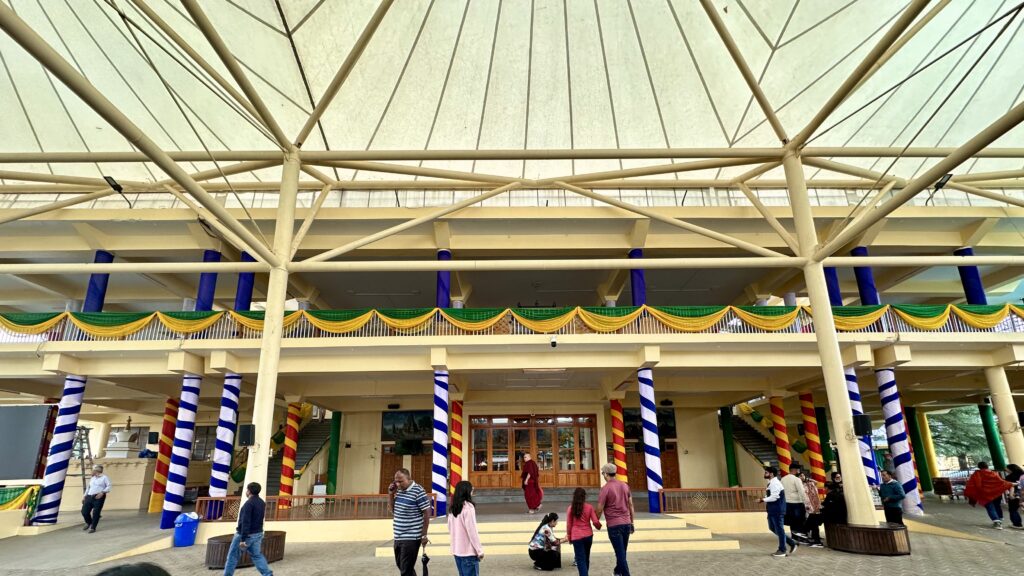
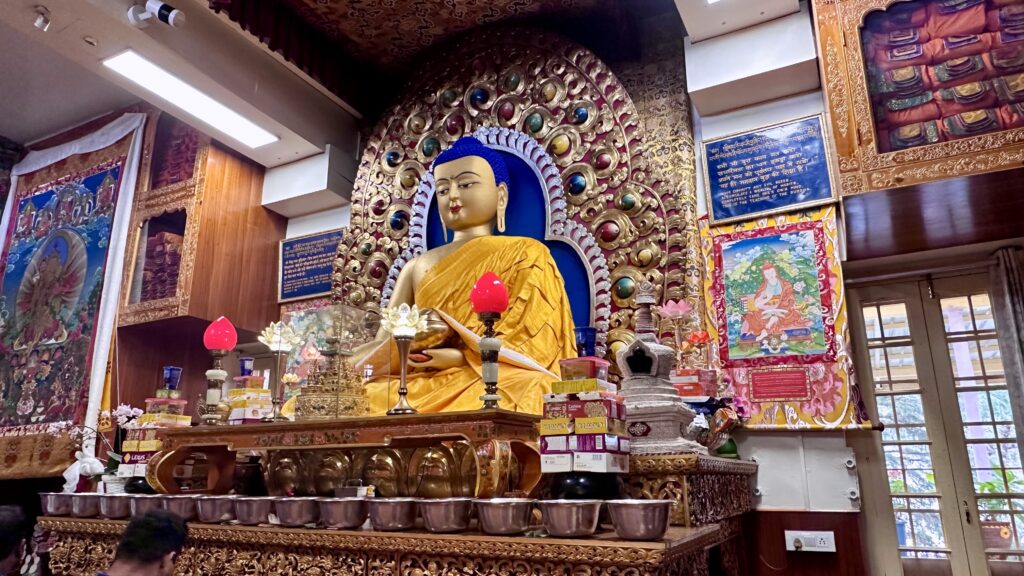
There were a few other interesting statues within the shrine –
Dalai Lama Temple, Green Tara – The temple displays a statue of Green Tara who was a beloved female Bodhisattva. She is often depicted with her characteristic emerald green skin, representing compassion and action, and is seen as a protectress of spiritual travel.
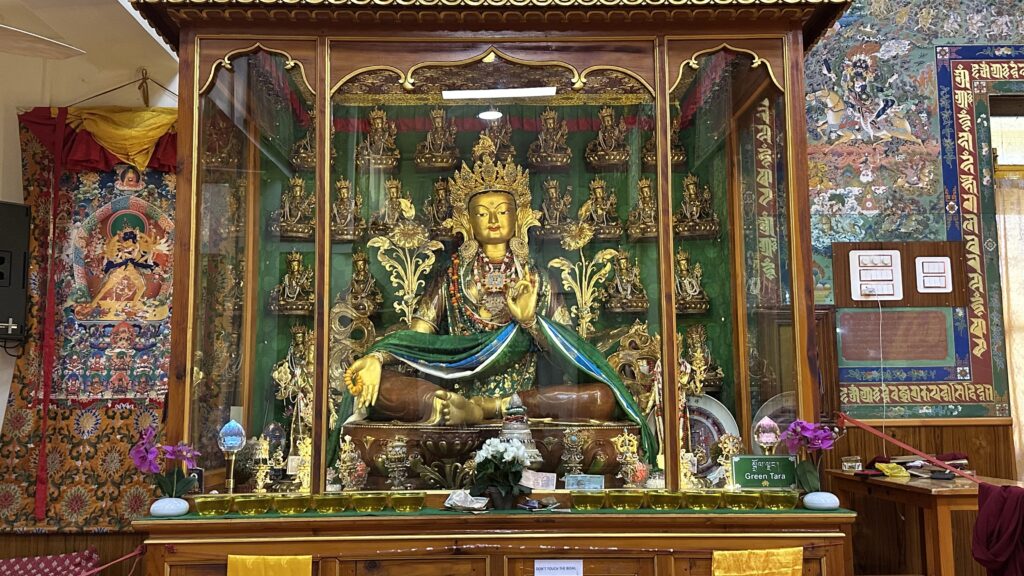
Dalai Lama Temple, Kalachakra – or “Wheel of Time,” is a profound Buddhist tantric system that explores the inter-connections of time, space, and enlightenment. It’s a major practice lineage within both Tibetan and Indian Buddhism, encompassing a vast range of teachings and practices. The Kalachakra mandala is a visual representation of the entire universe, including the physical world, the human body, and the path to enlightenment.
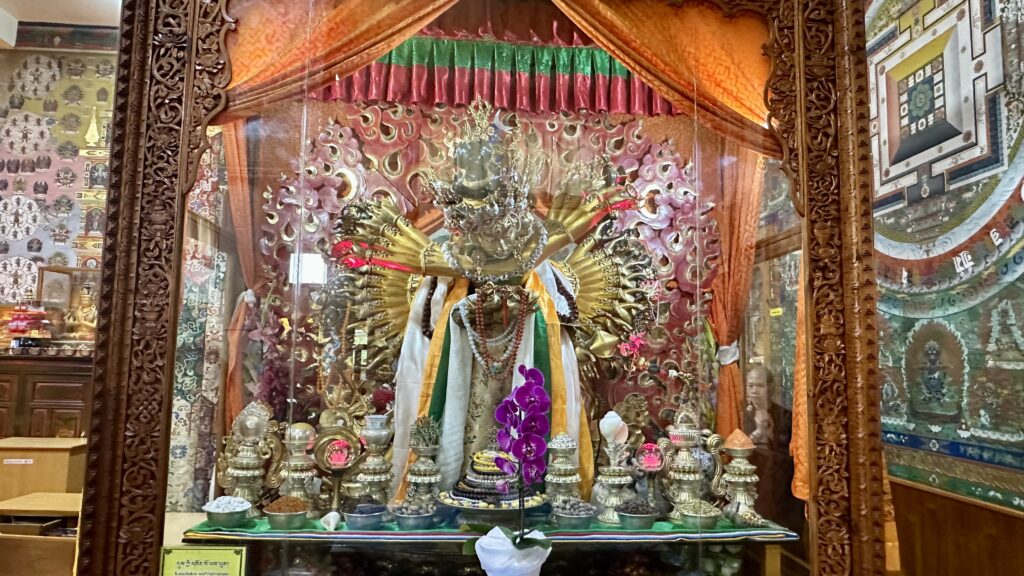
McLeod Ganj or McLeodganj – is a suburb of Dharamshala and is also known as “Little Lhasa” or “Dhasa” as it serves as the home of the Dalai Lama and the Tibetan government-in-exile and there is a significant population of Tibetans in this region. After we visited the Dalai Lama Temple, we walked the streets of McLeodganj. The bustling markets around Temple Road sell Tibetan handicrafts, woolen shawls and jackets, thangka paintings, and Buddhist artifacts, making them perfect for souvenir shopping.
it’s on the outskirts of Dharamshala. Perched at an altitude of 2,082 meters in the Dhauladhar range, it serves as the home of the Dalai Lama and the Tibetan government-in-exile.
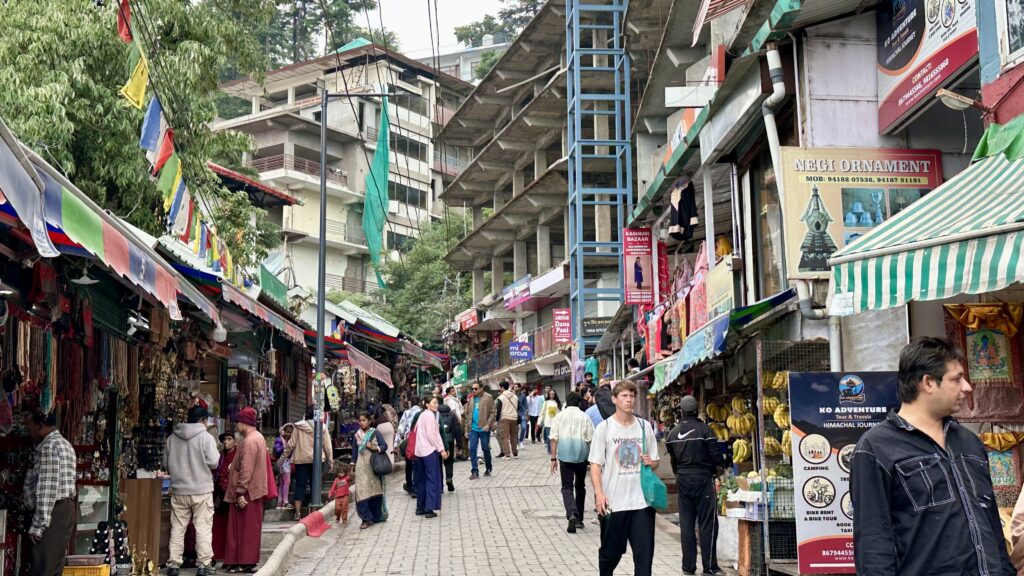
McLeodganj-Dharamshala Ropeway – The ropeway between Mcleodganj and Dharamshala, is a 1.8km long ropeway that takes you from Mcleodganj to Dharamshala in just 5 minutes. Travelling via the ropeway allows you take in the stunning views of the town, the mountains and of the lush greenery all around. It is a great opportunity to take some aerial photographs!
